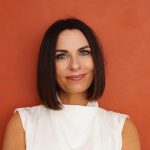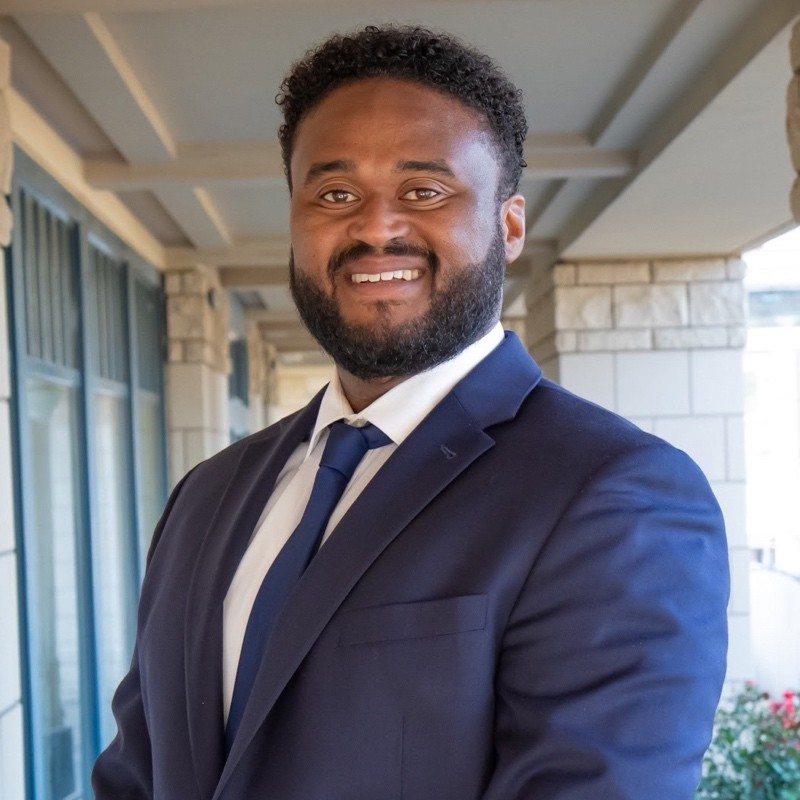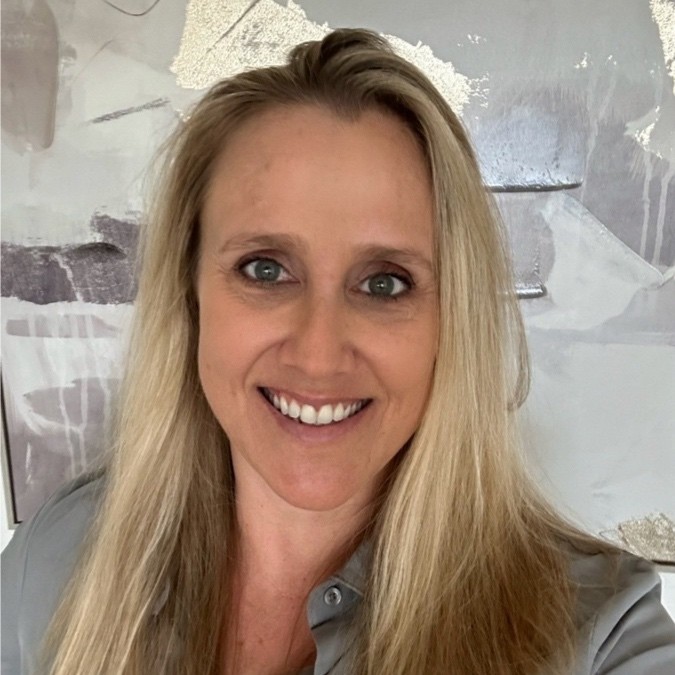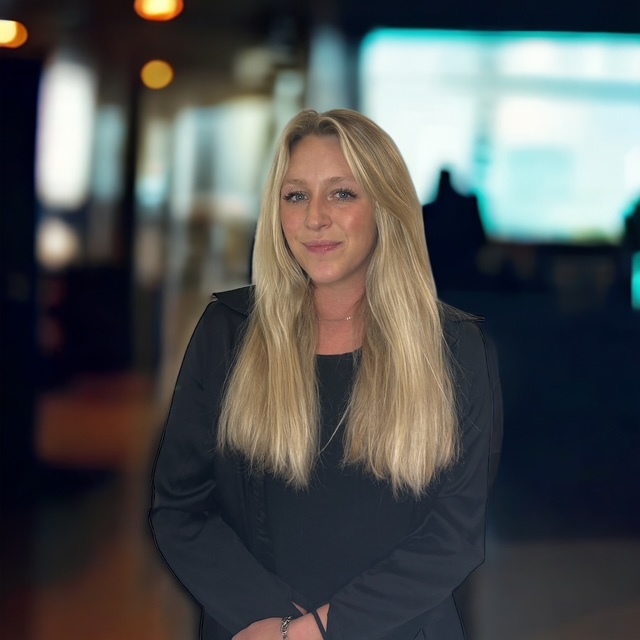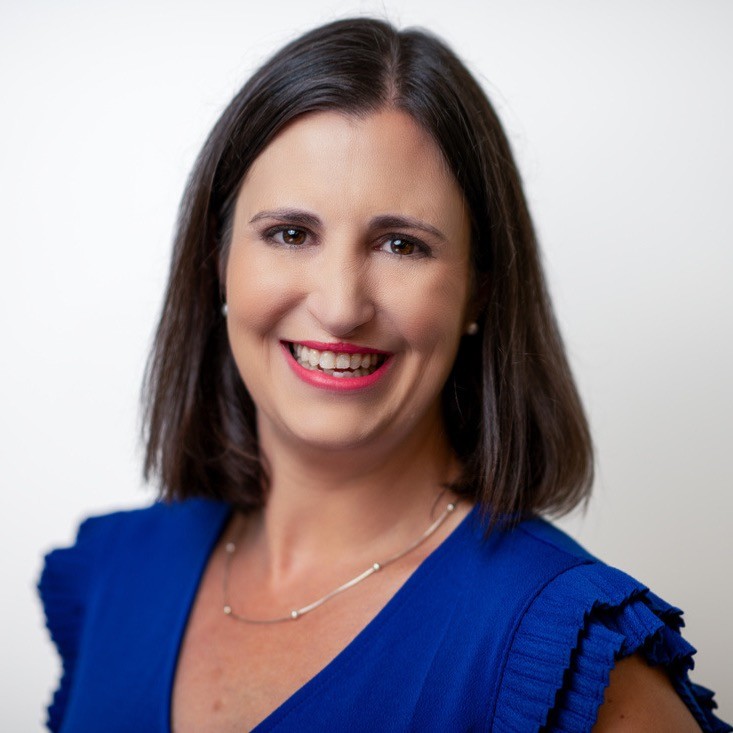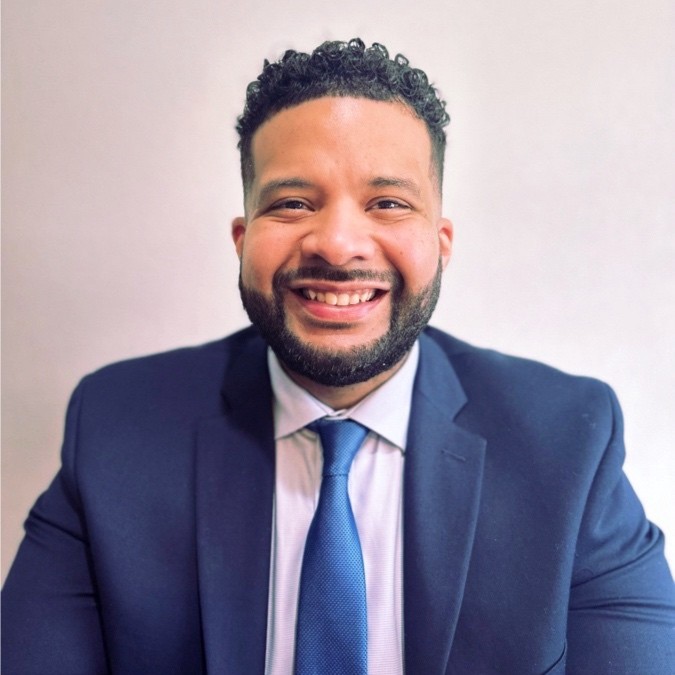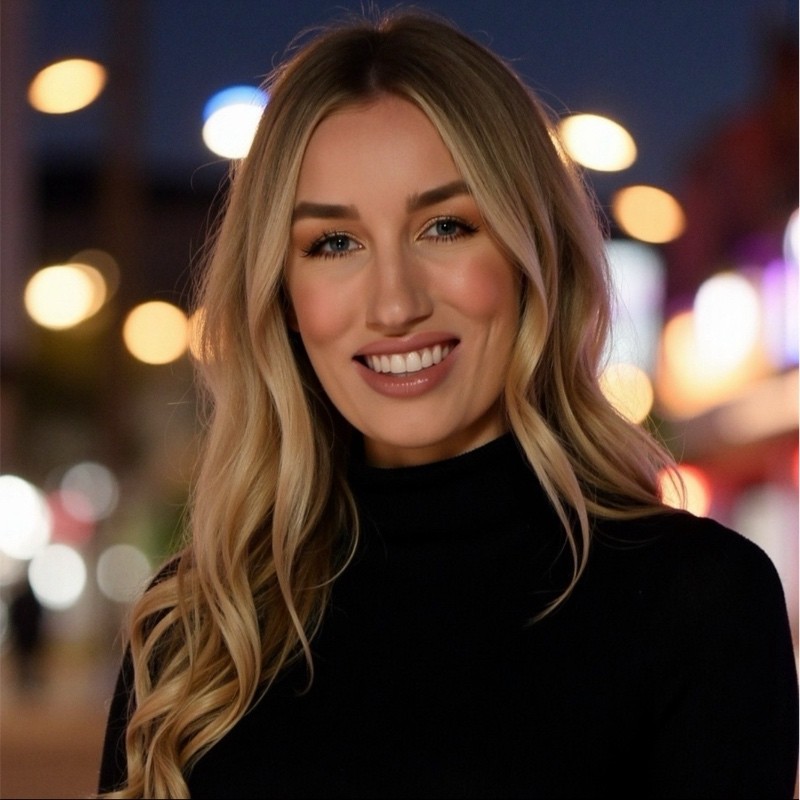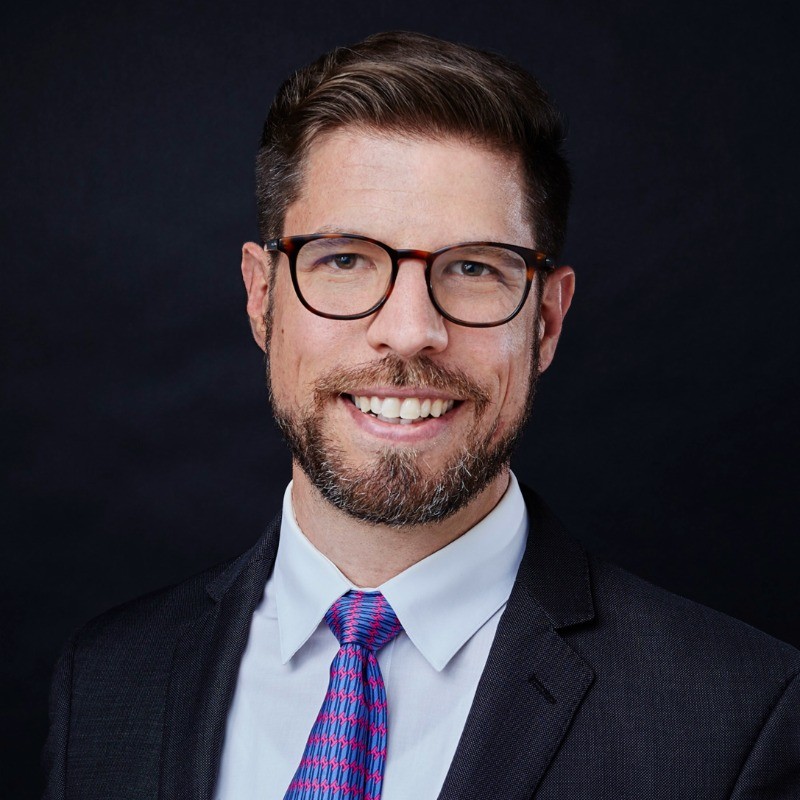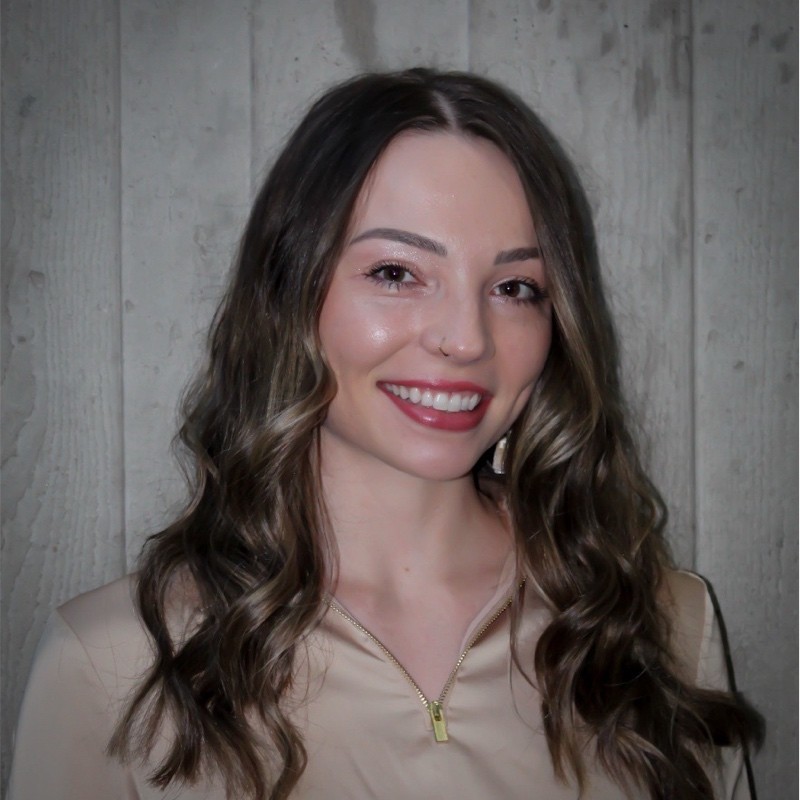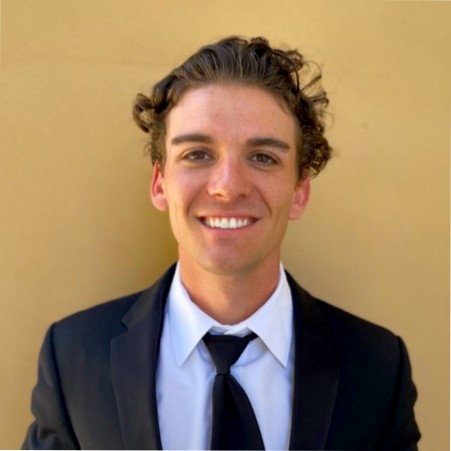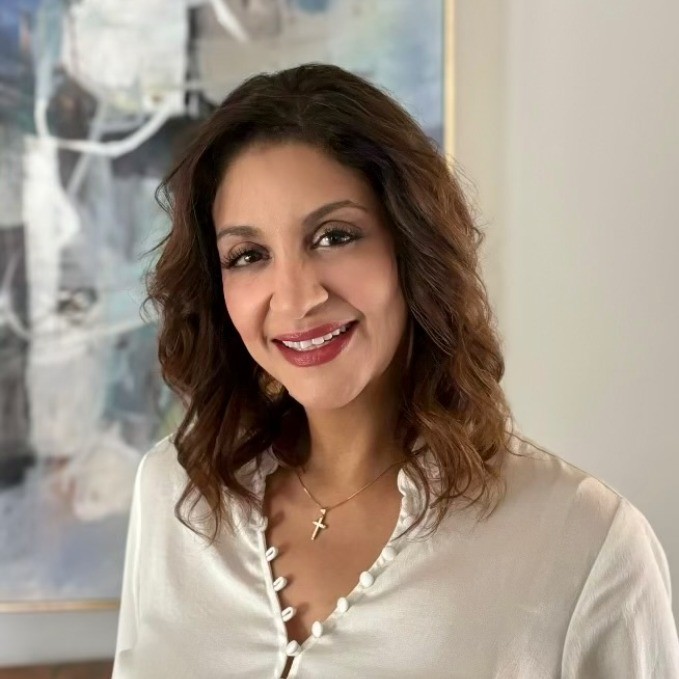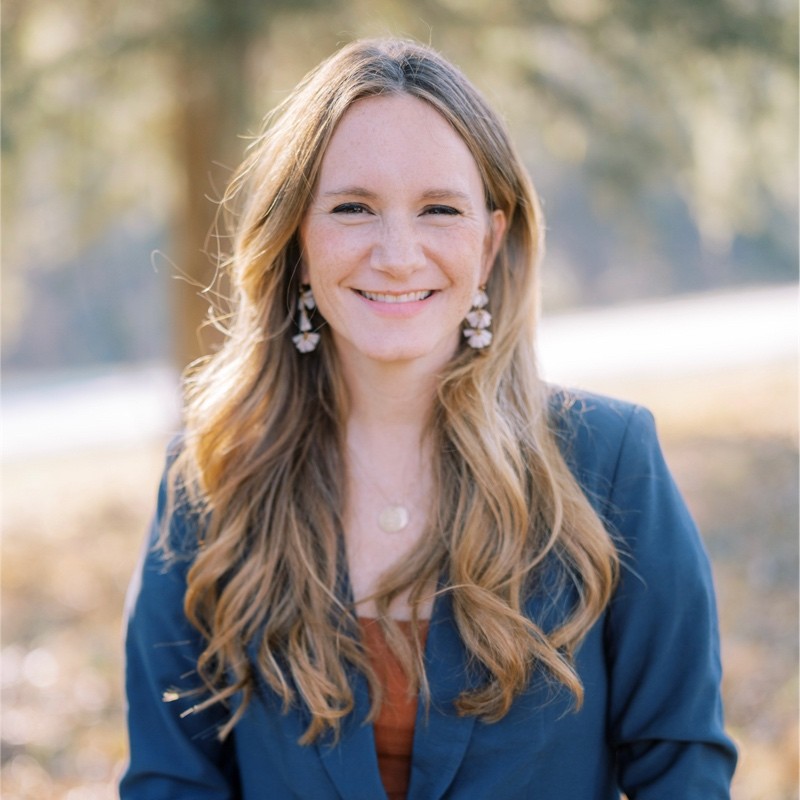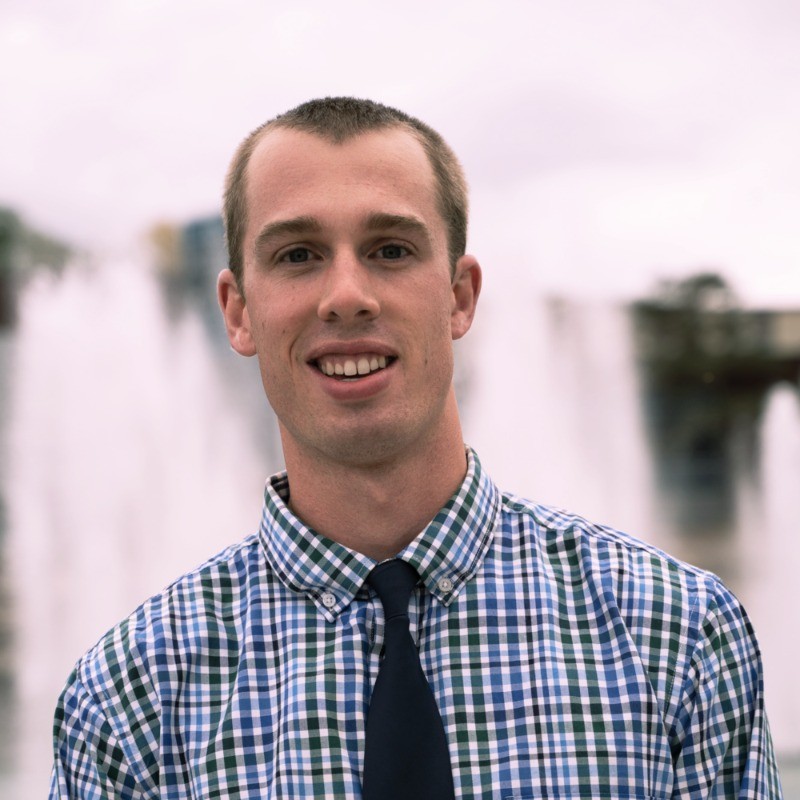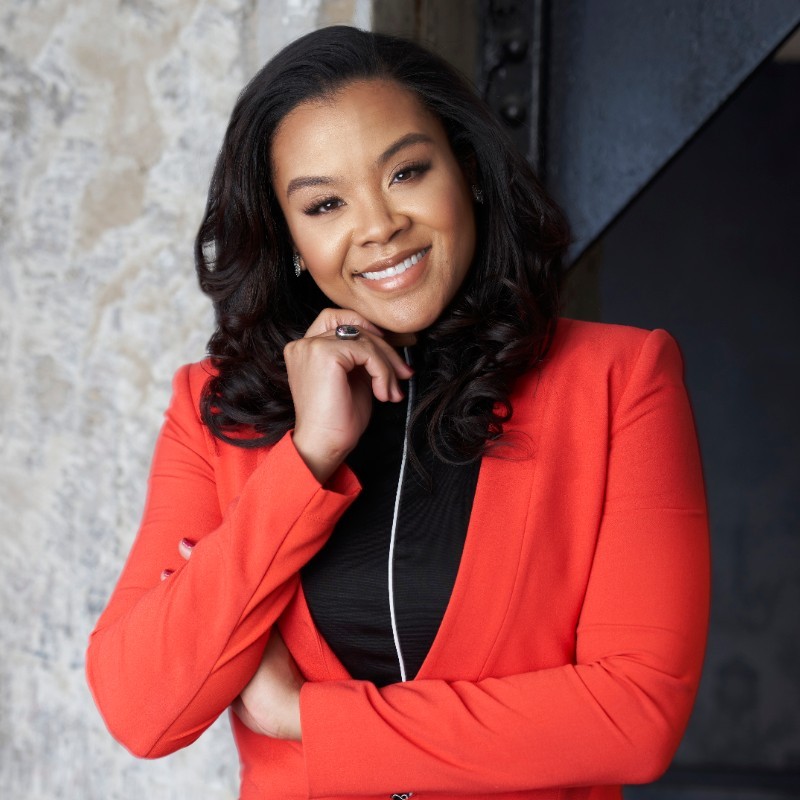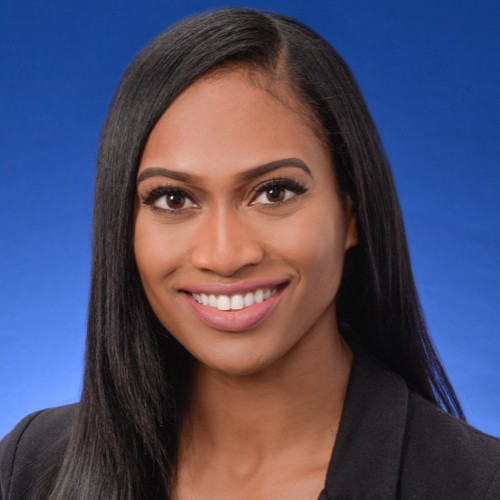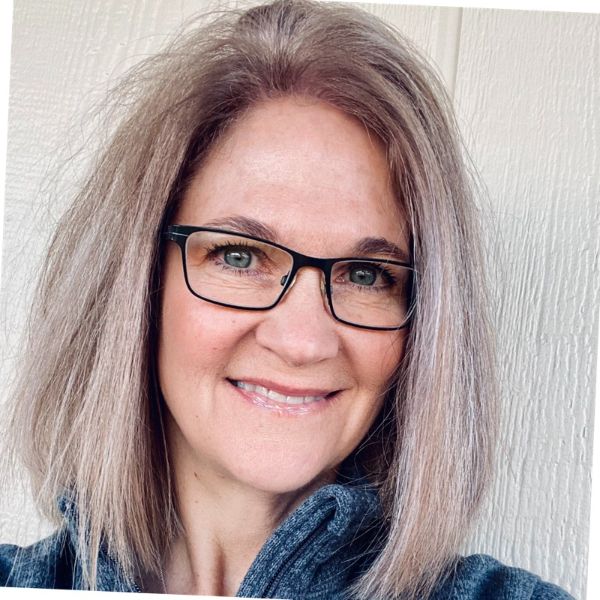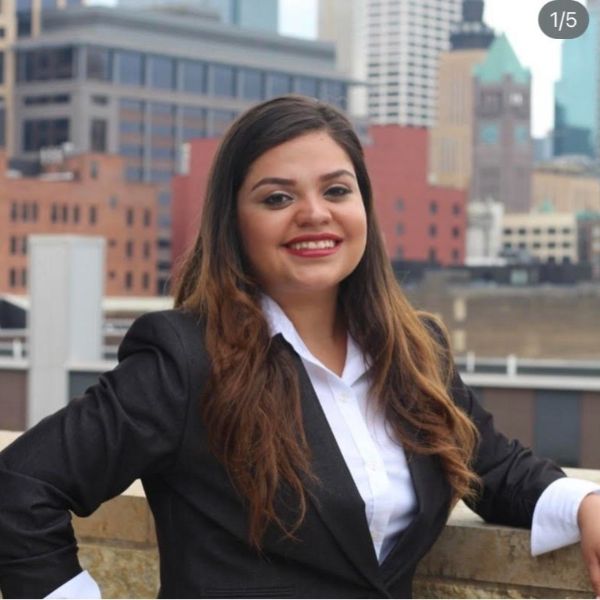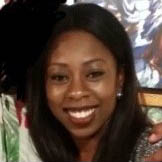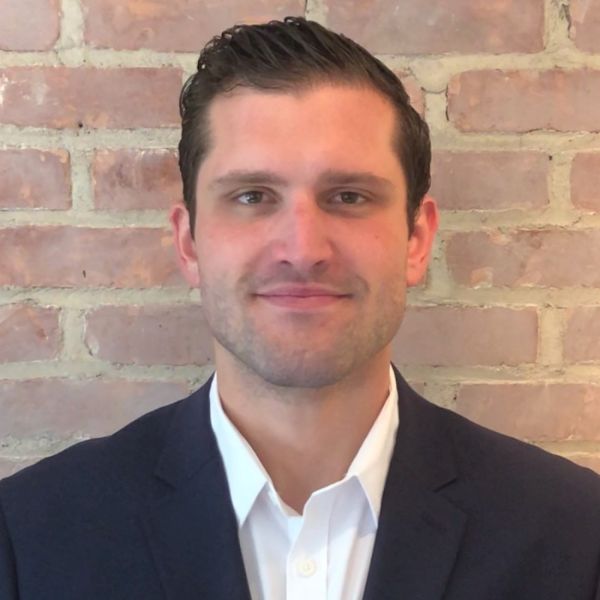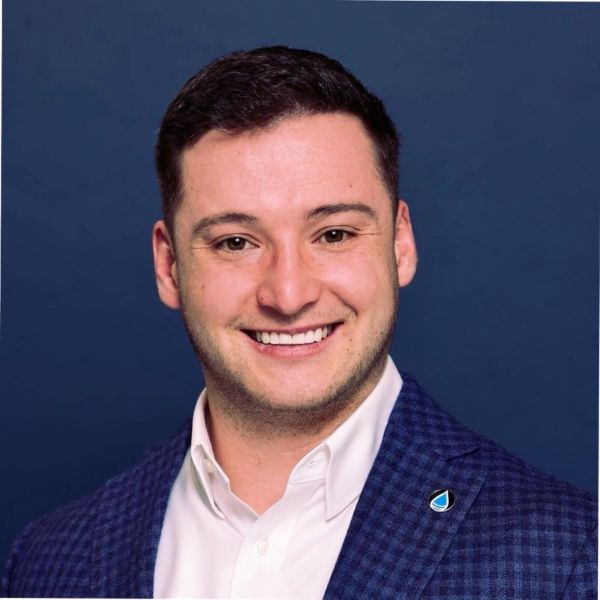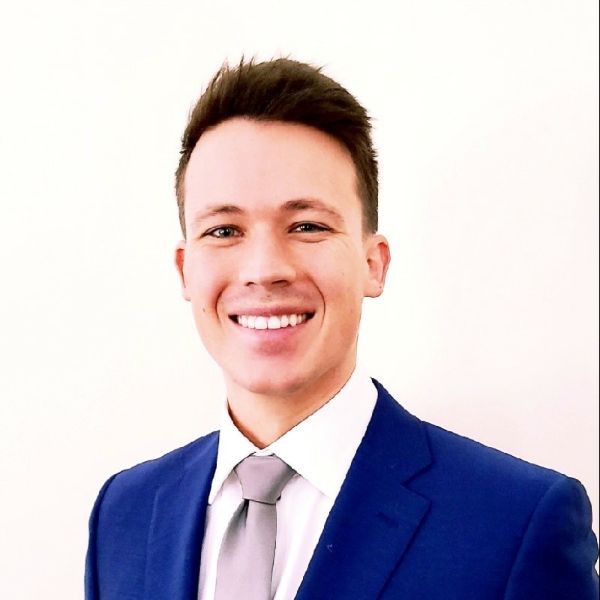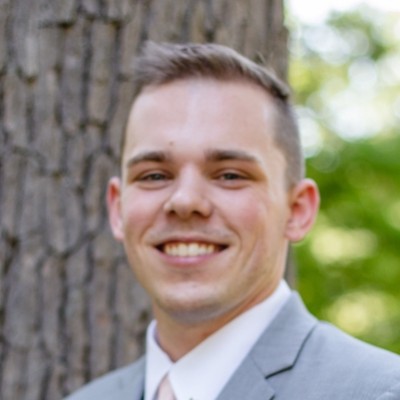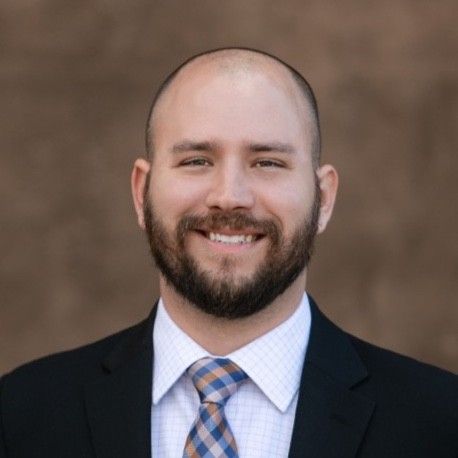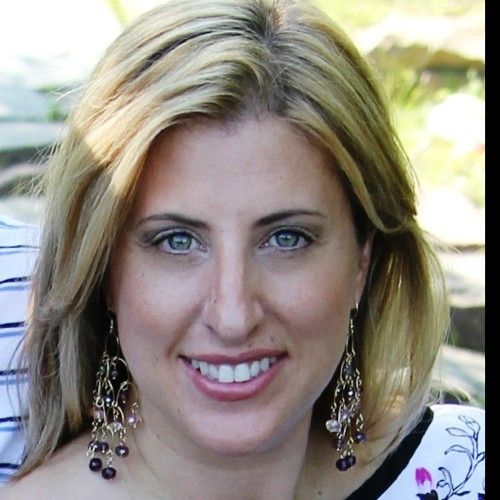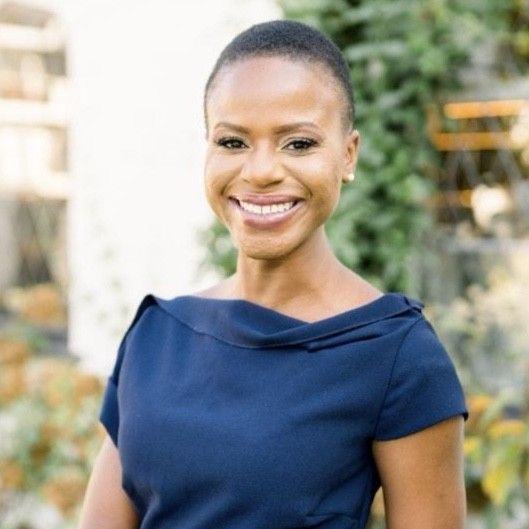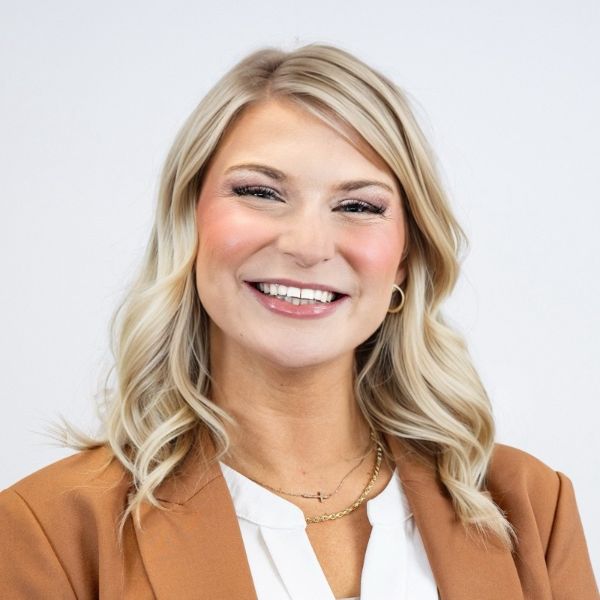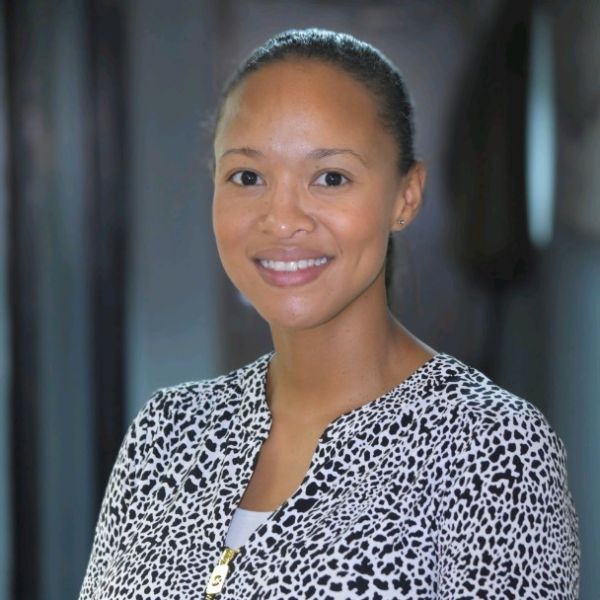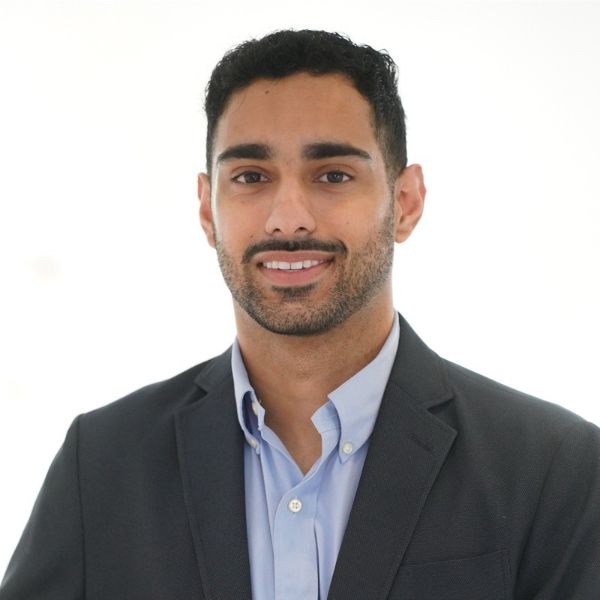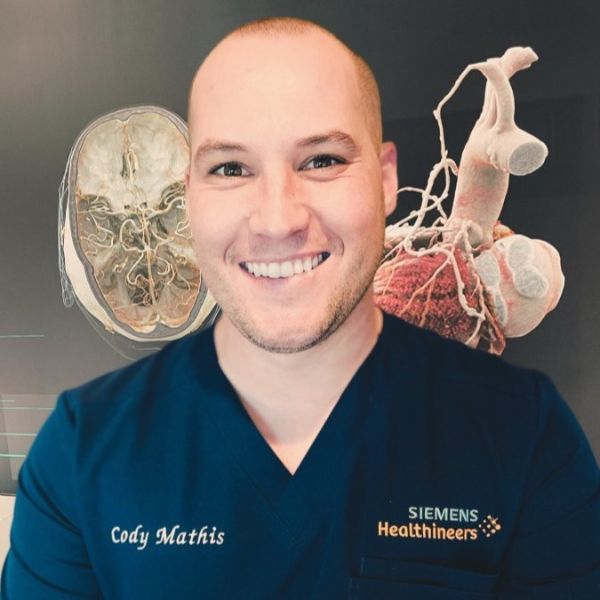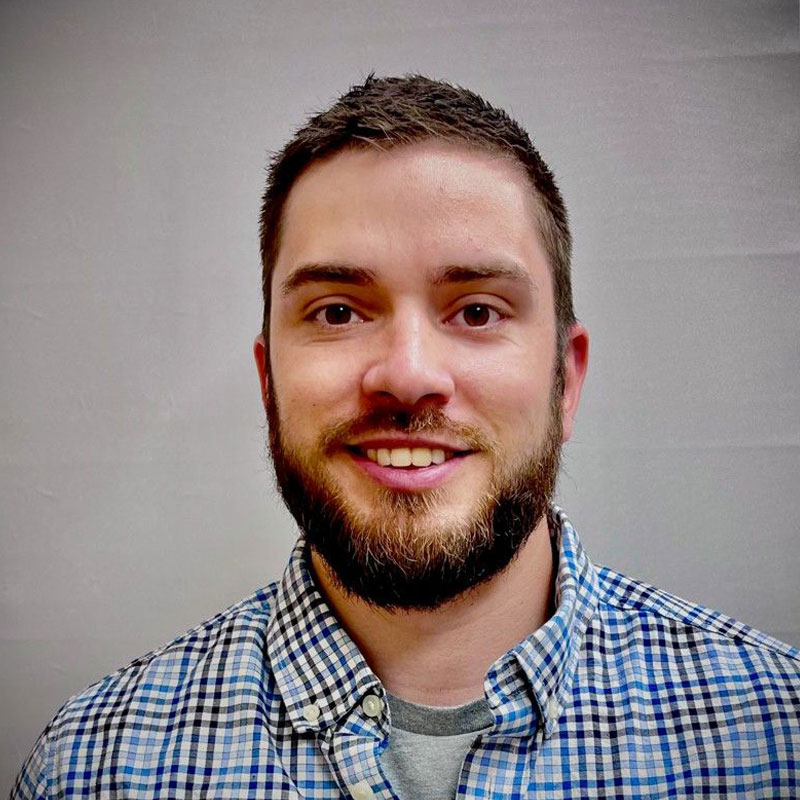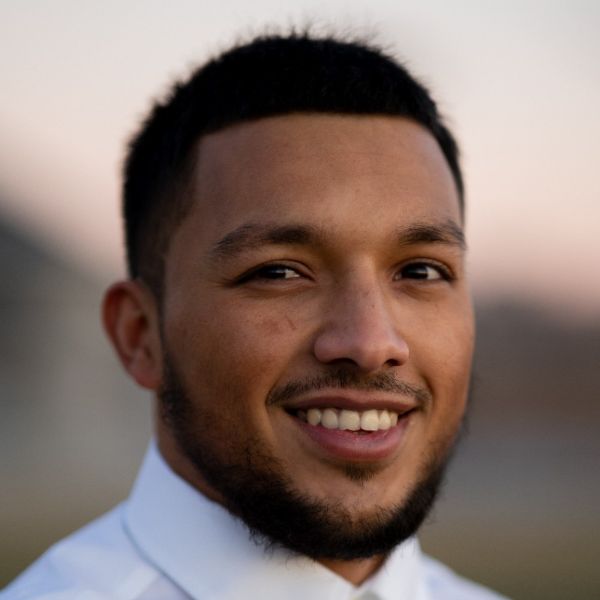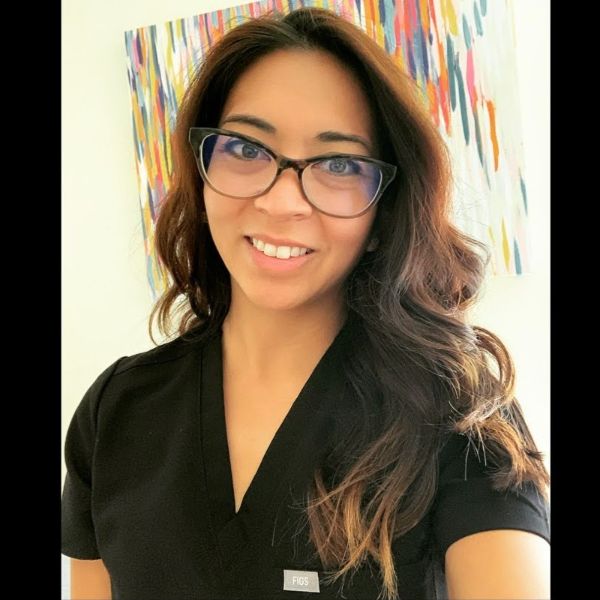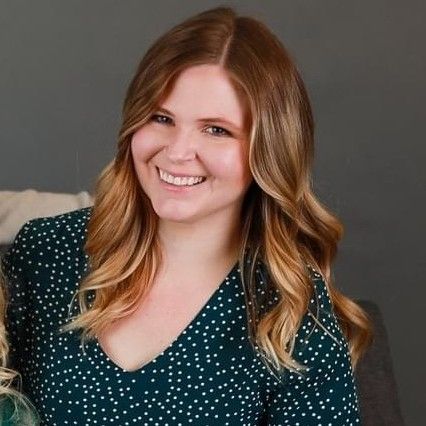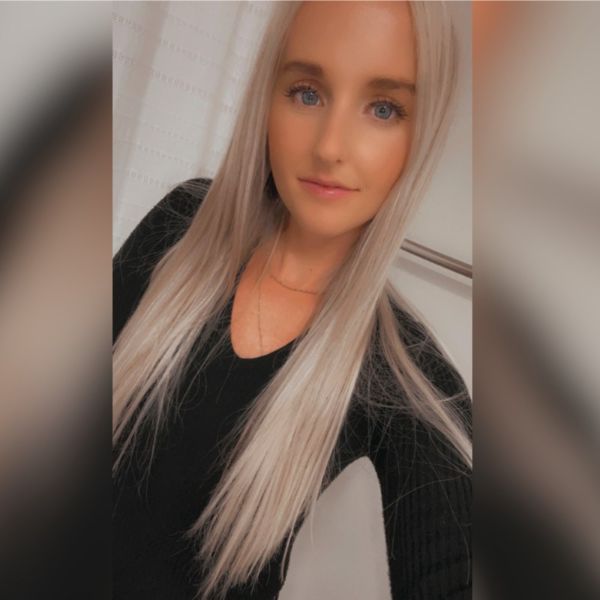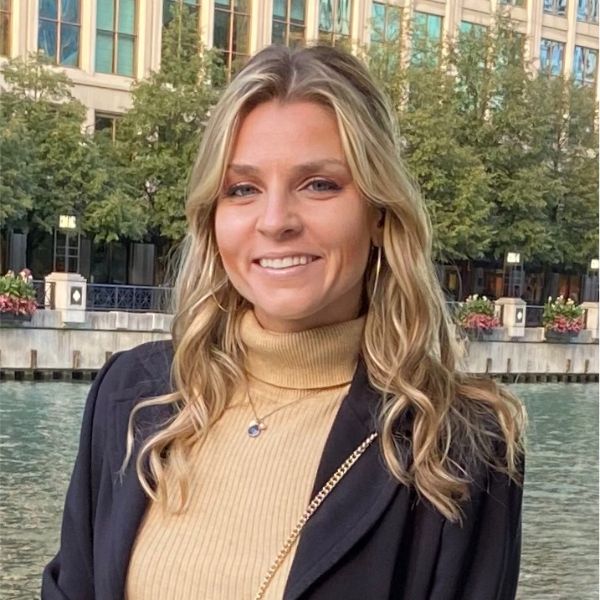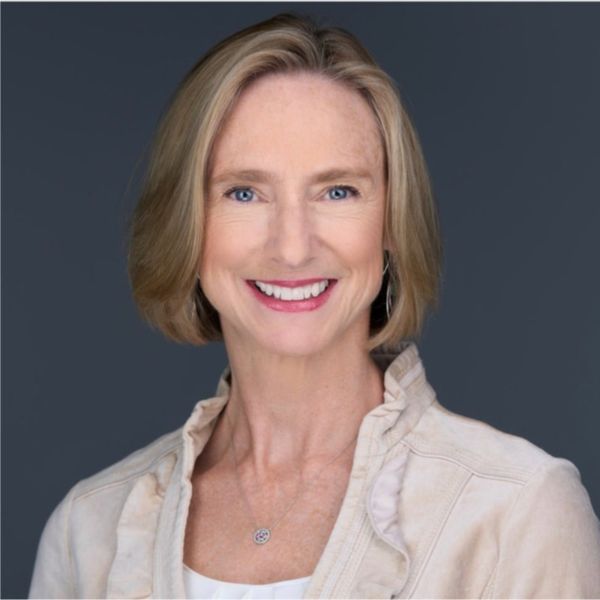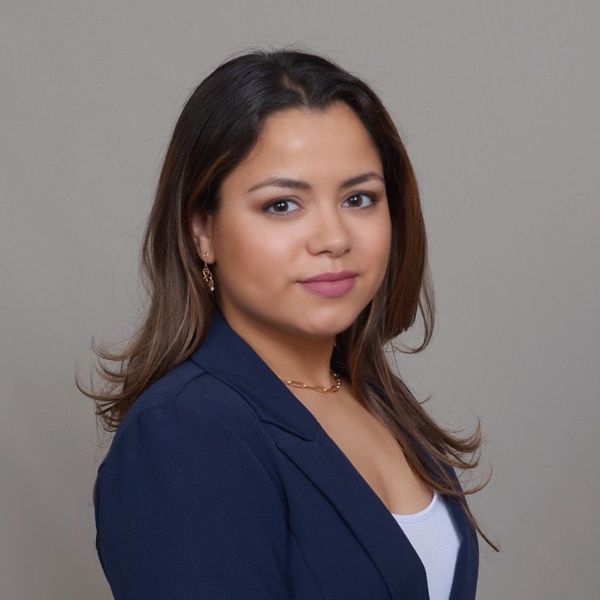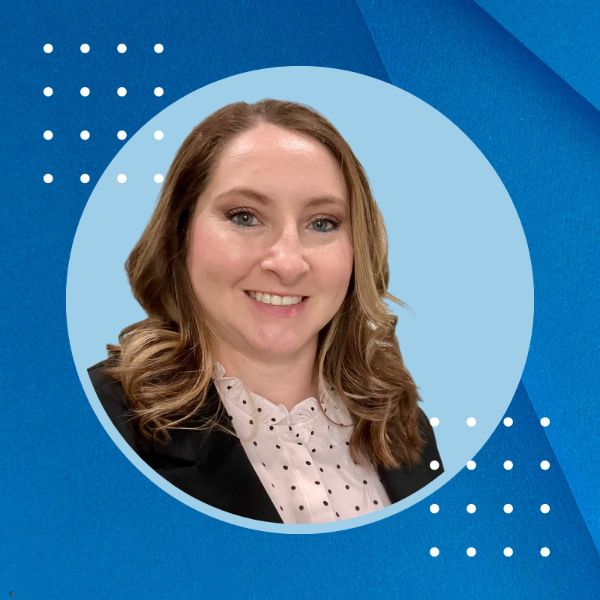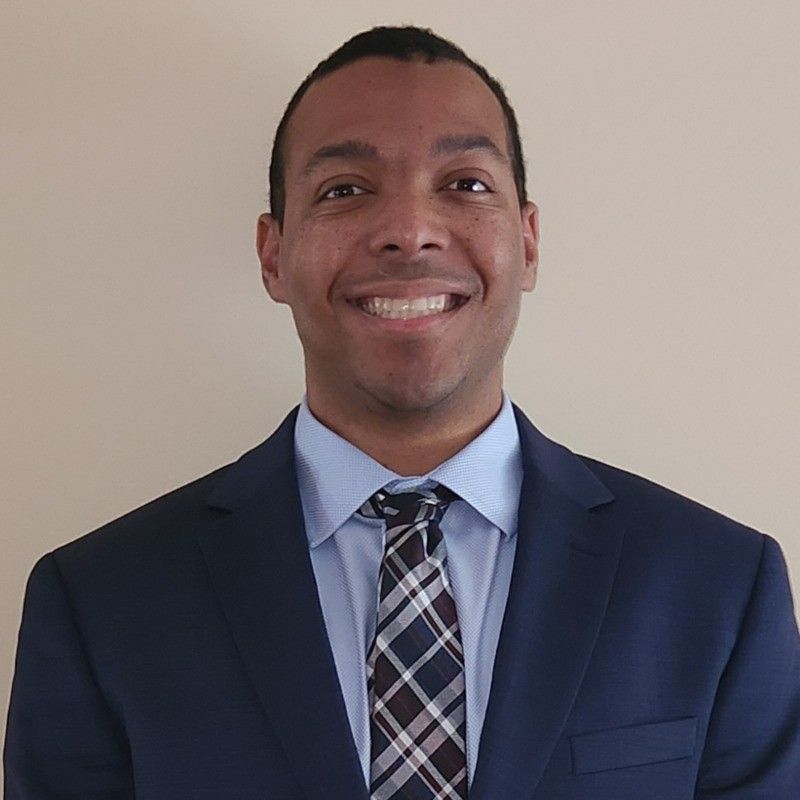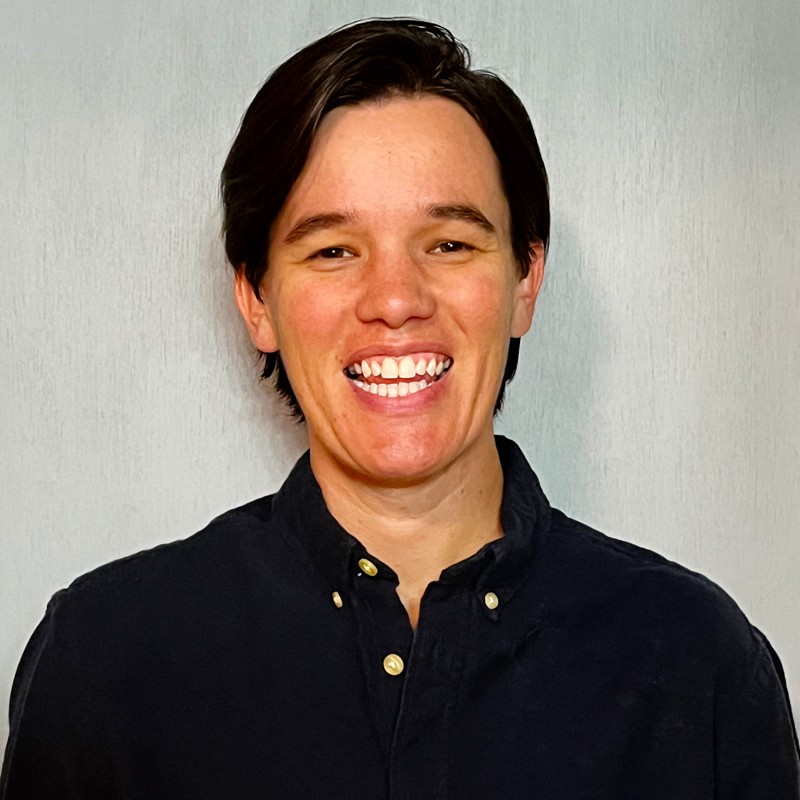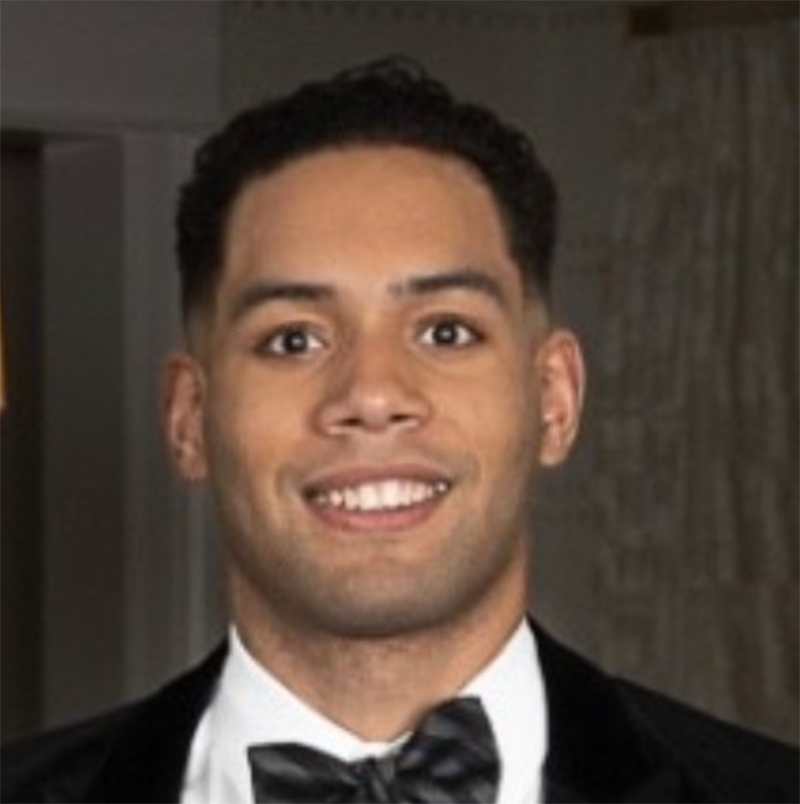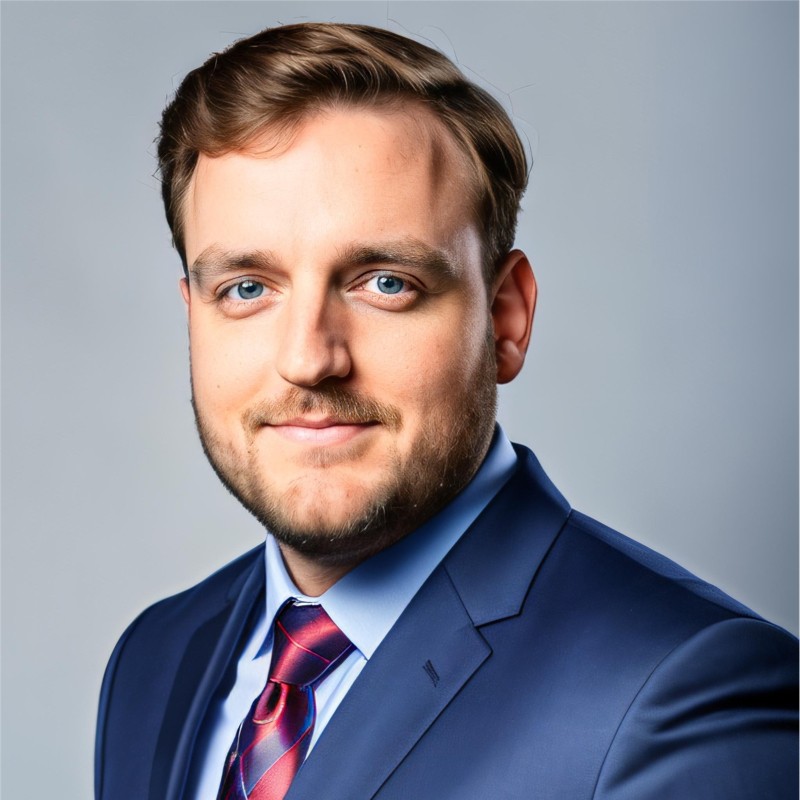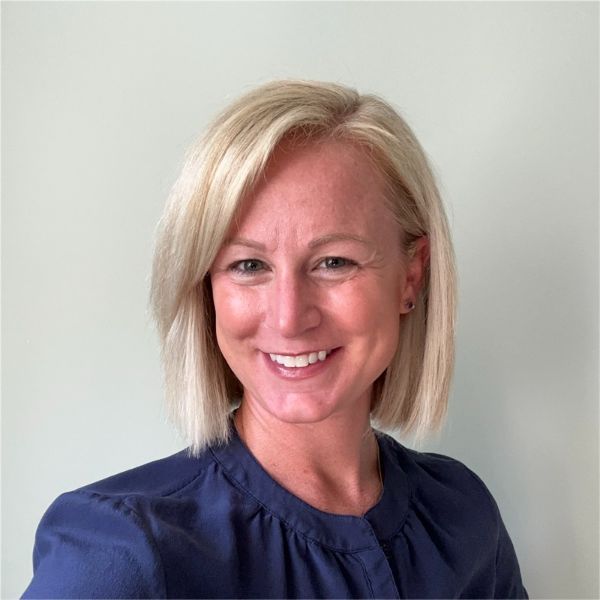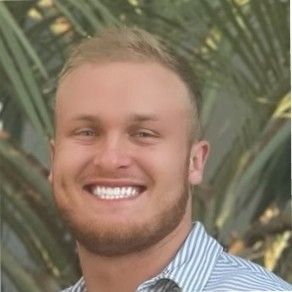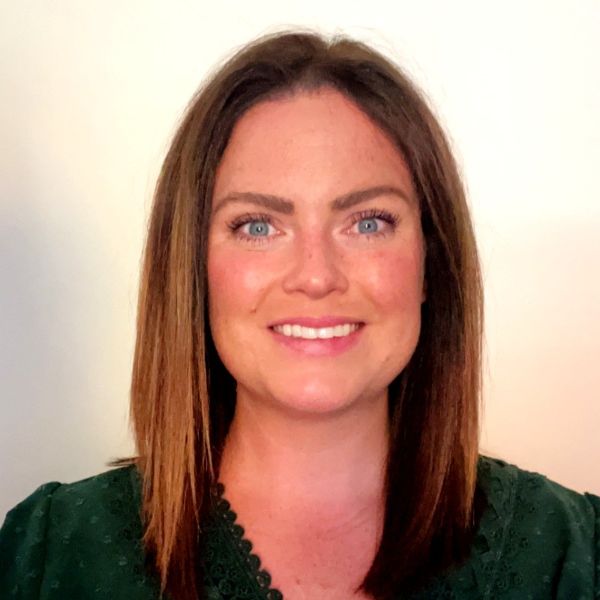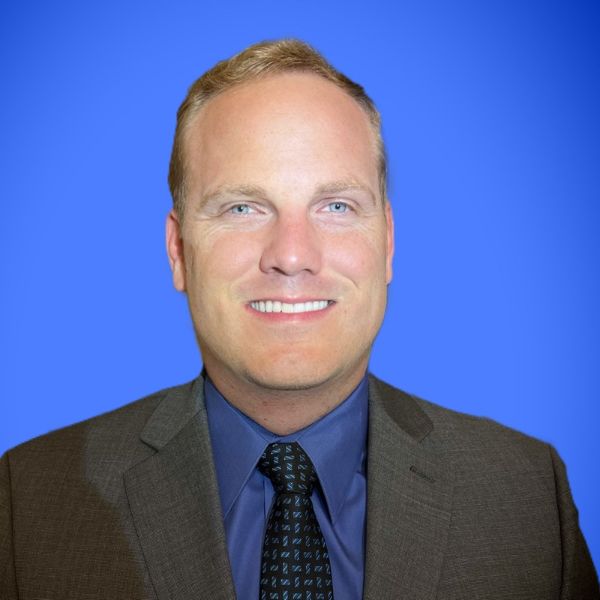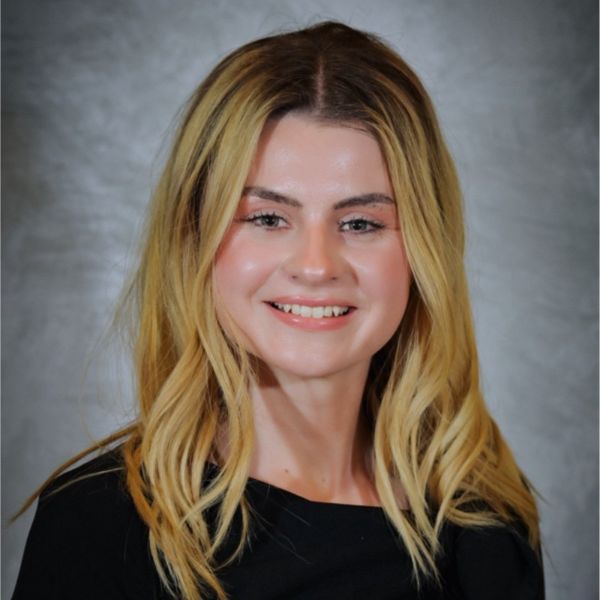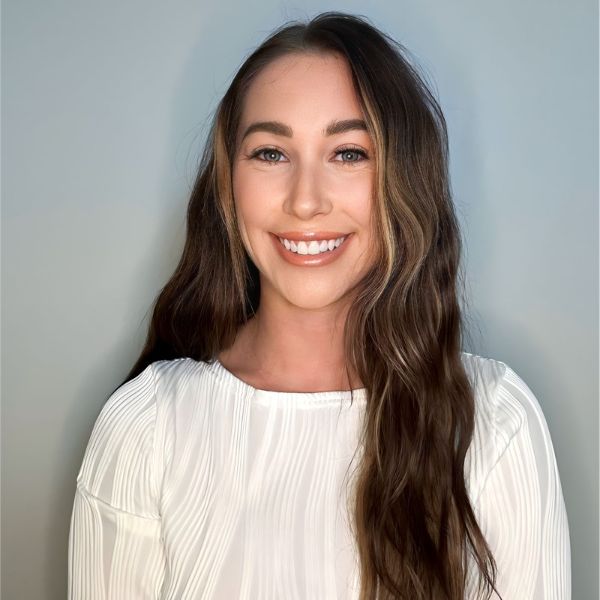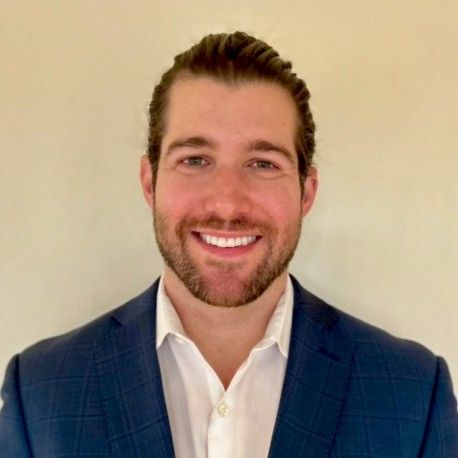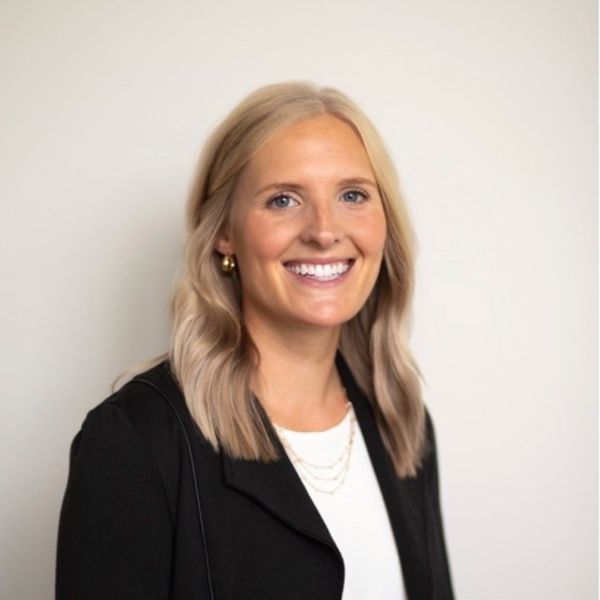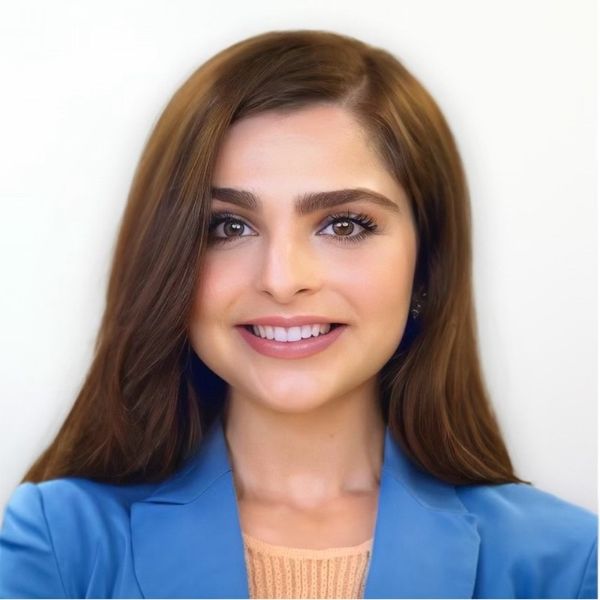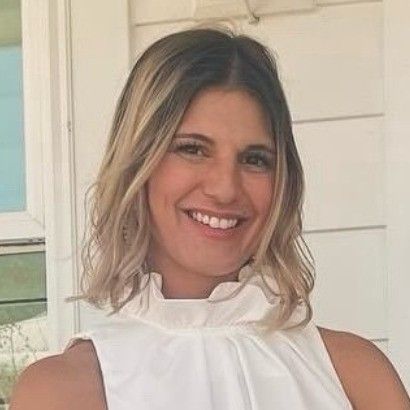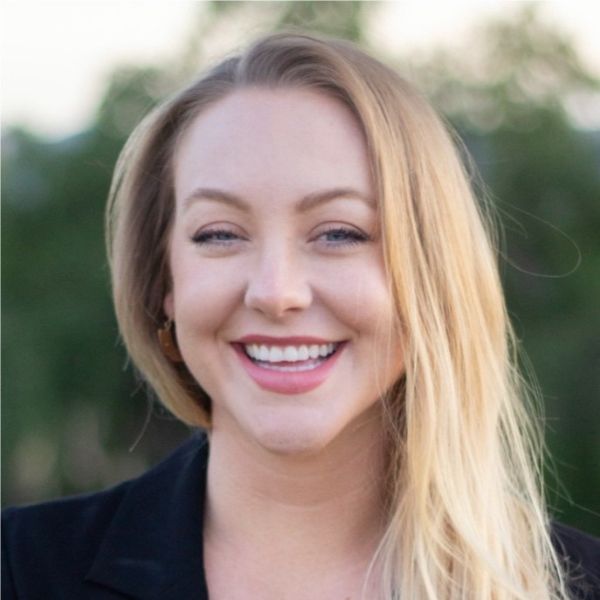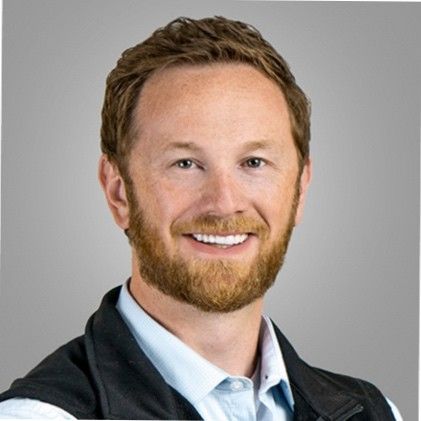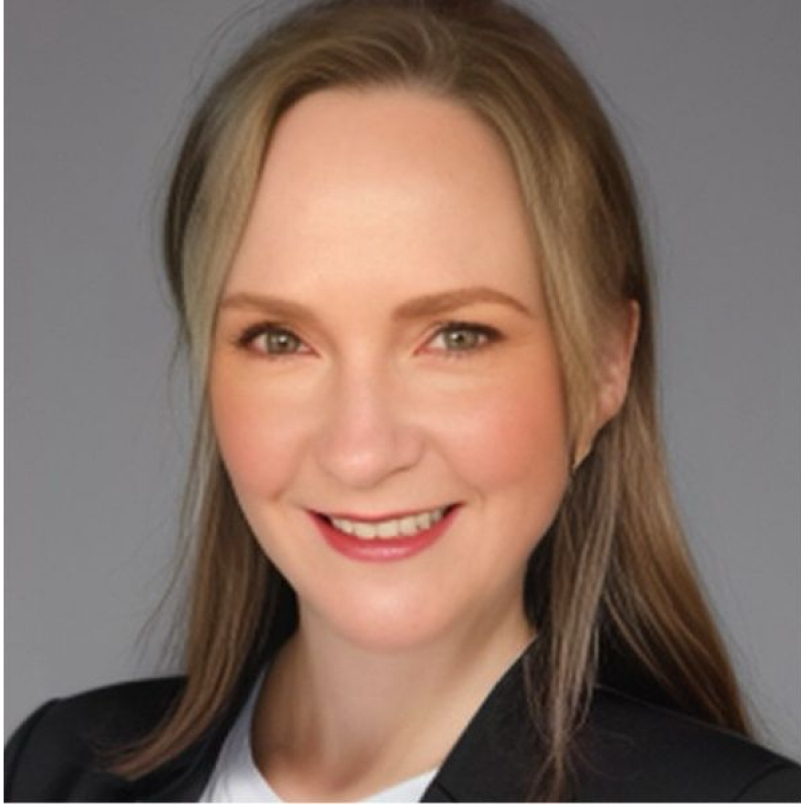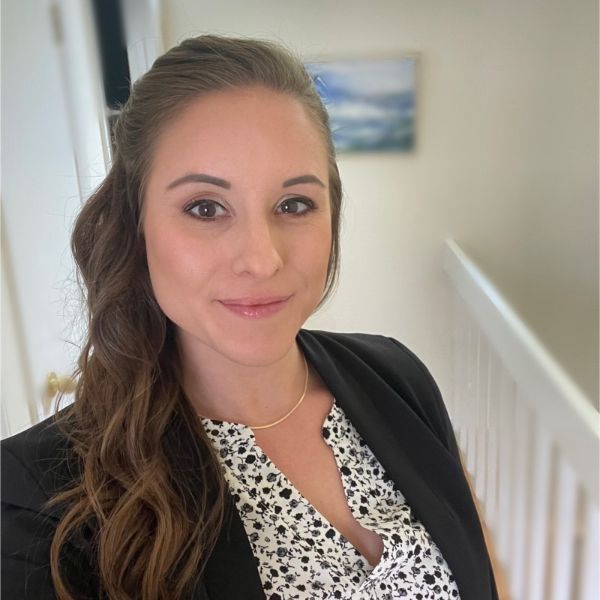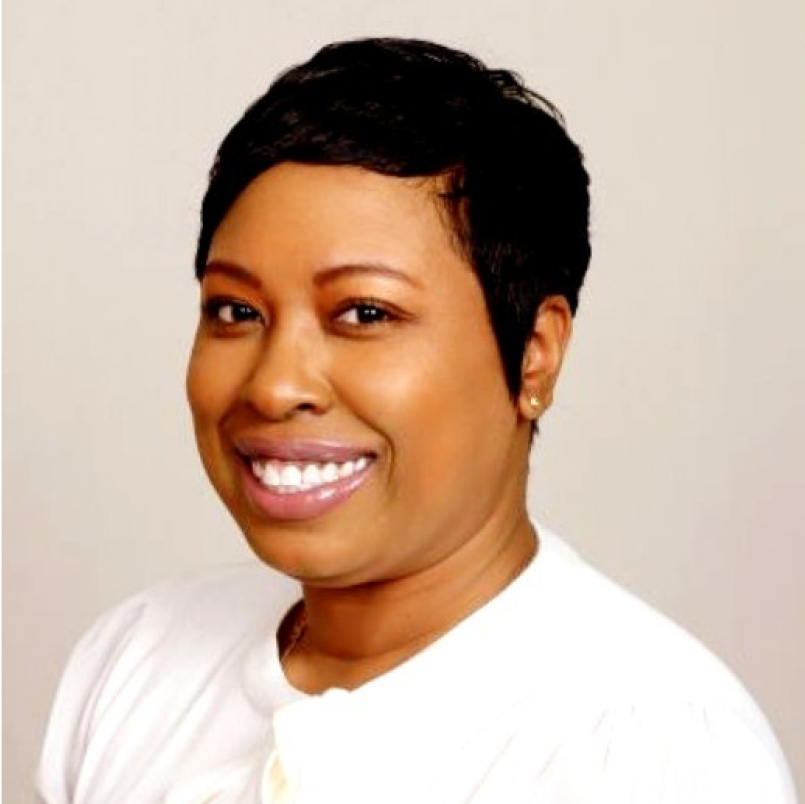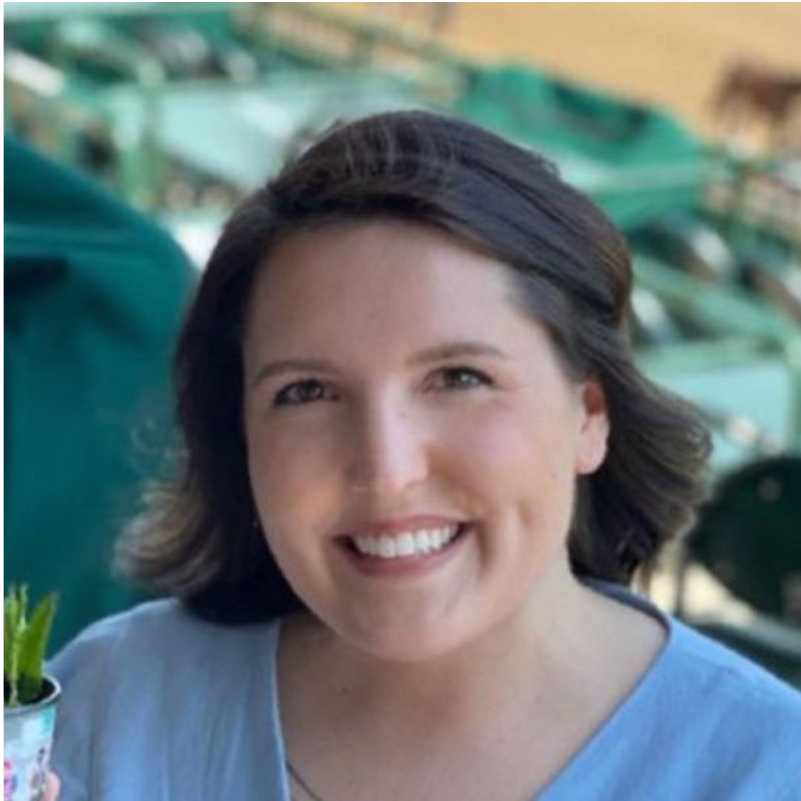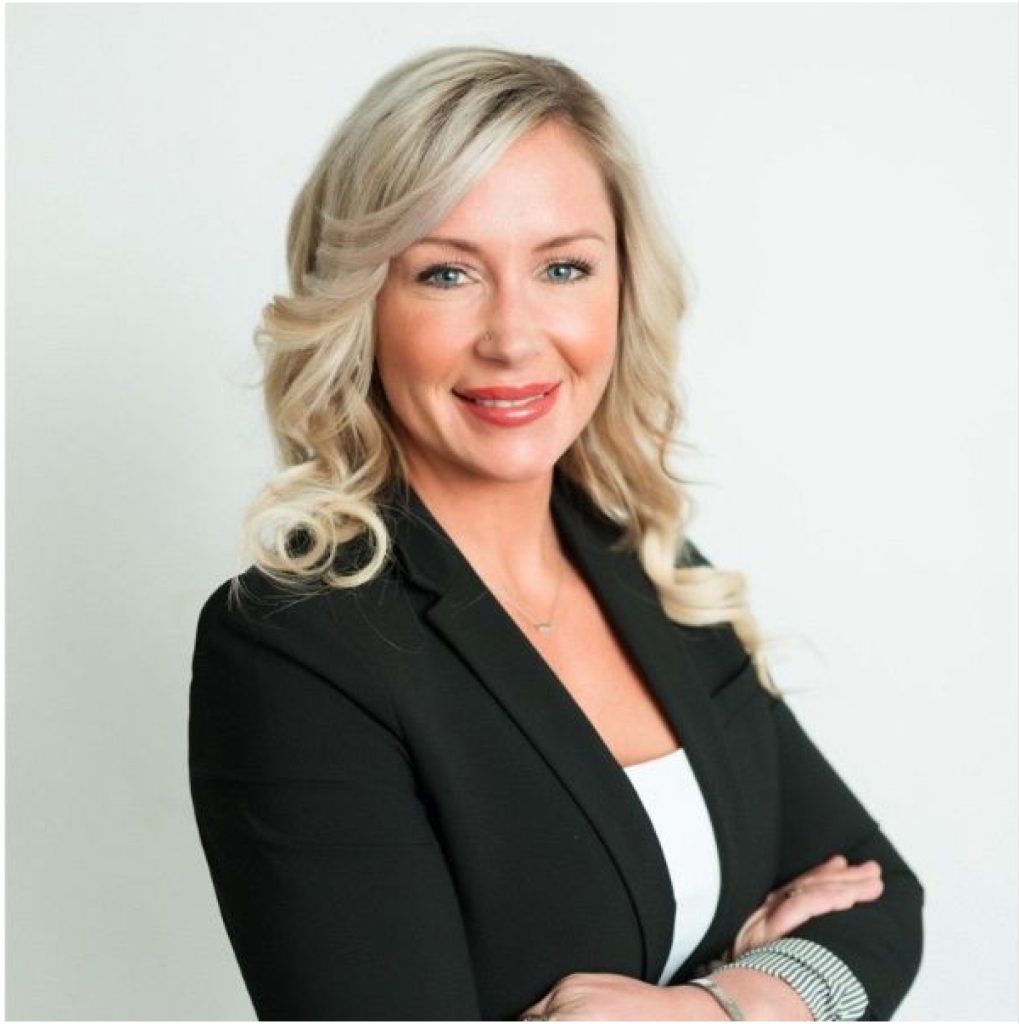Cancer patients don’t want to be recognized as “pitiful sick people.” They are still themselves, but sometimes it can be hard to feel that. That’s why this episode will be an inspiring conversation about conquering cancer with “cooler heads.” Samuel Adeyinka interviews special guests Kate Dilligan, Ryan Denney, and Courtney Turich, who are the founders of a fascinating organization that has developed a solution to help cancer patients maintain their full heads of hair while undergoing treatment. They share their journey, the challenges they’ve faced, and the inspiration behind their mission. Kate even shares her deeply personal story of surviving cancer and how it motivated her to create a solution for others undergoing treatment. From the initial idea to the company’s success today, we delve into the entire experience and uncover the keys to their inspiring resilience. If you or someone you know is dealing with cancer, or if you’re simply looking for a dose of inspiration, this episode is a must-listen. Tune in now and join the conversation on conquering cancer with cooler heads.
The CE experience for this Podcast is powered by CMEfy – click here to reflect and earn credits: https://earnc.me/ej93mg
—
Watch the episode here
Listen to the podcast here
Conquering Cancer With Cooler Heads
We have with us three very special guests. Their company is a fascinating organization because everyone reading this is familiar with the hair loss that comes with cancer treatment. This company has found a way for those undergoing treatment to maintain their full heads of hair. It was founded by Kate Dilligan and joined by Ryan and Courtney.
We get on and discuss their entire experience and the very inspiring story Kate shares. I’m going to leave it there. I don’t want to spoil anything, but it is a fascinating story. It’s an amazing company doing amazing things. For those of you reading, you want to be that much more tuned in to this episode. There are so many wonderful things to learn from and be inspired by. As always, we do our best to bring you innovative guests that are disrupting industries and pioneering new ways within healthcare sales. Thank you for tuning in to the show, and I do hope you enjoy this interview.
—
Before anybody says anything, I have three amazing guests on my show, which are Kate, Ryan, and Courtney. I’m going to let all of them introduce themselves. They all come from this organization. They’re disrupting industries. I’ll leave it there. Kate, please tell everybody who you are and what you do.
Our company is a technology company that is building the evidence-based products, content, and services that cancer patients need to manage the side effects of treatment. I came to this because, in 2016, I was a cancer patient. I found out firsthand that there is a huge disconnect between the care that you get from your oncology team, but when it’s time for you to worry about your hair falling out, mouth sores, and radiation burns, you’re all on your own. That’s the gap that we’re filling in the market.
Ryan, please talk to us about how you came to join Courtney in this endeavor.
I got to know Kate probably a couple of years ago. We had started the conversation when she was starting to think about commercialization and what it would look like, how she wanted to build a team, and what targets she wanted to go after immediately. Long story short, we developed a consulting relationship where I worked with her. We were perfecting the go-to-market strategy, building the model, and trying to figure out what was going to work and then what wouldn’t work.
We didn’t waste a lot of time, effort, and energy. We were then building out the numbers so that she could go get her funding at that point in time. Come full circle and after a couple of different almosts, we came to an agreement to have me come on board full-time. That was in July 2022. I had been working with Courtney at that time on the consulting company that I had developed after our last endeavor. Courtney was intrigued by it. I was intrigued by it, so we both jumped on board. I’ll let Courtney give more of her rationale and her story, but that’s mine.
How about you, Courtney?
I was working with him on the consultancy side and was introduced to Kate through that side of the business. I’ll have to tell you. Meeting Kate, she is one of the most dynamic, intelligent CEOs that I have ever met, especially being this female in this leadership role. Knowing that she went through everything she did and the passion she has behind what our big vision is at the company with treating patients, she pulled up my heartstrings. There is this synergy amongst our team. We were consultants at that point in time. That synergy kept growing, and before you know it, here I am and here Ryan is. We’re full-time. Kate lured us in. We couldn’t be more excited to be here.
Let’s take it back to the basics. Kate, what was going on with you to how this company came to be? Let’s get into the details of what you guys provide, but please, give us a story first.
My cancer diagnosis came out of a left field. I’d had a tough couple of years because my mom died of cancer and my dad died of Parkinson’s Dementia, and then all of a sudden, I found a lump. It turns out that it was breast cancer. When I was going to all my initial appointments, nobody was talking to me about symptom management. It was one of my best friends who was with me at those first appointments who did the research.
She found out that there is a therapy called cold cap therapy or scalp cooling that allows chemotherapy patients to keep their hair. When we asked my nurse navigator about that as I was getting ready to start treatment, her reaction was, “We’ve seen people do it. It can be successful, but we don’t talk about it because most people have to pay at least $6,000.” I wound up spending $8,000, which is an African safari trip. It’s a lot of money, but I was able to keep my hair. At the time, I was an executive at a company where I was employee number two. I was running a big business unit and I didn’t want the world to know that I was sick.
Here’s the crux of what it is that we’re doing with symptom management, especially with starting off by providing this therapy to patients. We talk a lot about privacy, agency, and identity. What you don’t want as a cancer patient is for the whole world to know that you’re sick and for you to be pitied. I wanted to be seen as Kate, not as a cancer patient. That was important to me at the time as I was going through it. That allowed me to do heads down and keep my eyes on the prize of what I was doing, but it also compartmentalized my cancer treatment.
[bctt tweet=”What you don’t want as a cancer patient is for the whole world to know that you’re sick and for you to be pitied. ” via=”no”]
I’m going to give a two-minute about what the therapy is because that explains how we’re so disruptive and how we’re changing this market. This is what scalp cooling is. You bring the patient’s scalp temperature down to 65 degrees before, during, and, here’s the kicker, for a minimum of two hours following chemotherapy. Chemotherapy kills all fast-growing cells in your body because the tumor is fast-growing. That’s why your hair falls out and you get mouth sores. You have digestive problems. You have nerve damage. It’s a blunt-force instrument to attack every fast-growing cell in the hopes to shrink the tumor. That’s why the tumors are so arduous.
By making the patient’s scalp cold, the blood that’s going to the hair follicles, those capillaries constrict. That vascular constriction prevents the hair follicles from absorbing chemo, and that allows the patients to keep their hair. There are systems that were cleared by the FDA before our product became commercially available.
Since the therapy is before, during, and for several hours following treatment, the legacy systems keep the patients in the chair for twice the amount of time as their chemo infusion. If you’re the CEO of an infusion center, you can’t afford that. It’s the restaurant problem. If somebody pays their bill, you want them to get up to leave so you can sit down somebody else and they can order appetizers and drinks.
With Amma™, we’ve created the first FDA-cleared patient-administered portable system for scalp cooling. Patients are offloading nurses, but they’re getting this therapy that has superior fit and superior functionality than the legacy systems. It’s critically important. When that patient is done with their chemo infusion and they have a few more hours of cooling, the device has multiple power modes. It’s got this magical new technology called a battery, which you and your audience may have heard of. It allows the patients to unplug it and go someplace else to finish up their scalp cooling.
Since Medicare is reimbursing for this therapy, we’re the first solution for this symptom management that’s profitable for infusion centers because we’re not costing them extra chair time. It is a reimbursable therapy. What we’re seeing out in the field, and Ryan and Courtney can talk about this a lot more, is a cancer patient is worth a lot of money to a health system. It’s probably about $250,000 in profit.

There’s a real knife fight, as one of our investors described, over how you attract that patient to come to you. How do you have a compelling enough suite of services when people go what I call cancer shopping about, “I’m going to get a second opinion. Let’s see what this doctor says. My friend had a good experience with this doctor or a bad experience with that doctor, so I’m not going to go there.” How do you allow an infusion center or a health system to have this comprehensive suite of services so it makes it easy for the patient to choose to go to get treatment at one particular health system over another? That’s what we’re doing.
From how this came about to the model you guys are executing, this is huge.
I’ve got to say it is having pros like Ryan and Courtney on board who are leading our direct sales effort. I was joking with Ryan. We got our first account and our first purchase order in less time than Liz Truss was Prime Minister of Britain. We’re seeing there’s this huge pent-up demand. Infusion centers and health systems know that they have to provide this therapy because patients are asking for it. With the other systems, it’s been like if they had it, they only had it for people that asked for it. We’ve built a product and we’re helping them build programs so every patient when they go through their chemo training if this is appropriate for them, are told that this is an option.
This is fantastic. Ryan, you’re right there on the front lines with Kate. When you hear this, it sounds like a no-brainer and you guys can only go up. What would you say are some of the challenges you’ve seen in driving this concept and helping these infusion centers realize the benefit?
I wish it was always as easy as you indicated. You hear the story and it’s a no-brainer. The reality is though, you’ve got to educate the folks that are utilizing the technology and that are seeing the patients. You’ve got to help them understand the differences and specifically the key differentiators that we provide.
For those that have been in the startup world, the name carries a lot of weight if you’re a big company. It doesn’t carry any weight if you’re a little company. When you’ve got a big company name associated with your business card, it’s easier to get in front of folks. We’re coming in there as this company, and most people haven’t heard of us. We’re trying to establish a market and brand recognition. That’s the first challenge. That’s what Courtney and I face most often. We’ve got to get somebody to be willing to talk to us.
The second piece is the scalp cooling market’s been around for a while. This is not the first technology that’s been created. The other companies, quite frankly, are good companies. They’ve got great technologies. They’ve done a very nice job of establishing the market. What we’re trying to do is iterate on that market. We’ve got to show folks that are used to what the predicate technologies bring why we’re a bit different and why we’re potentially a bit more advantageous for them inside of their infusion centers. Those are the two biggest challenges.
Past that, it’s the same traditional challenges that you’re always going to hear as a med device rep or probably as any sales rep in any industry, which is all of the norms. You’ve got to get the right budget cycle. You’ve got to find the right product champion. You’ve got to do all of the little things that you’re supposed to do to work through the process. Other than that, it’s getting in front of the right folks. Those folks, in our case, are traditionally medical oncologists, nurse navigators, and surgeons that are dealing with these chemotherapy patients. What are your thoughts?
That’s the biggest challenge for us, especially as a startup. It’s getting in front of people. In a world of everybody pinning physicians and nurses via email because of COVID, they’re even more inundated than they were before by people reaching out to them. What we find that’s been most beneficial is using our connections in our network and getting warm introductions. That’s how we’re getting in front of the people we need to talk to. Once they get in front of us and they see the technology in person, that makes all the difference because it speaks for itself.
That makes a great point. One thing that she said that resonates with me is we’ve done all of this initially as a grassroots effort. Quite honestly, we weren’t planning to get this aggressive commercially until 2023, but the feedback and the response from the folks that we’ve been talking to are similar to what you said. “It was a no-brainer. Why wouldn’t you do it?” That’s the feedback and the response that we’re getting. It hit the accelerator a little bit earlier, but it’s still very much grassroots.
We haven’t been to one trade show yet. We haven’t done anything from a marketing perspective except what Courtney’s done via social media. We’re doing everything word of mouth, and it’s already rolling downhill. I’m excited to see what happens in ‘23 when we can streamline our process a bit, hit the trade shows, do the marketing campaigns, and do things more of what I will call a focused manner as to more of what we’re doing, which is a bit of a shotgun approach.
Here’s one thing that I’m curious about. To give you guys a little bit of my connection to cancer, my mom was diagnosed with breast cancer in 2008. It sent the family into a frenzy and us trying to figure out what we can do. It was a family effort. I have three sisters. We all tried to figure out what can we do to help in every capacity possible, but we’d never heard of this. I’ve never heard of this. I’m wondering why we’ve never heard of it. Is it for the mere fact that we know we’re not dealing with cancer ourselves, or would you go as far as to say that this is not well known in general?
We’ve all got a different thought there. I’ve got a similar situation to you, Samuel. My mother was diagnosed with breast cancer. That’s why Kate’s story resonated with me. My aunt was diagnosed with breast cancer. Everybody’s got a connection to cancer in some way, shape, or form. For me, part of the enjoyment of this job is the connection. It’s easy to get passionate about something that hits this close to home in so many ways. For Kate, it’s right at home. For me, it was my mother and my aunt. I saw it happen.
This was never even a conversation. This technology never had a conversation. Nobody even had heard of it. It’s momentum. I’ve got to give credit to the companies that existed before us. They’ve done a lot of great work in establishing the market and building a little bit of what I will call groundswell around the technology and what it can do. We’re trying to take that to the next level through iteration. I’m sure that question is a different answer for both Kate and Courtney.
Please share, Kate, and then Courtney.
Coming into this space, I’ll be honest. I never knew about scalp cooling either. There was a part of me that was questioning, “Why would people be interested in this?” That was until I spoke with Kate and understood the reason why she wanted to keep her hair. I’ve talked to more patients about why. It’s not about vanity in this scenario. It’s about keeping your identity and your privacy.
After learning their stories and putting myself in their shoes to get the feel of what that would be like, I get it. Do I want my kid to come home from school and see that I don’t have hair and that I’m sick every day? No. I still want him to have that same foundation and that same day-to-day that he’s always had. I don’t want his life to change. Anything we can do to provide normalcy to people is huge during this time. Kate, you know better than anyone when your life is completely out of control.

What we’re also seeing is that depression in cancer patients leads to poor outcomes, which costs payers money. Our first patient in the Pacific Northwest is one of the 8% of chemotherapy patients that refuse chemo because of hair loss. We’ve seen people throughout COVID not make rational decisions about their health. Chemo is hard. It was a tough not only four months of chemo, but the two months of recovery afterward. It turns your life upside down for six months. How can you compartmentalize that? How can you go out to lunch with your friends and feel normal beyond going to work meetings, being on Zoom, and feeling like you’re still you and more than a cancer patient?
This therapy is recommended by the American Medical Association as well as the oncology societies globally. It’s the emotional impact of hair loss on chemo patients, and not just women, but on men, because it throws your life even further out of control. Symptom management is becoming the next frontier in oncology because if you can prepare a patient better for the things that they’re going to face and help them recover quicker, that fundamentally is going to lead to better outcomes. Ultimately, this is a business. It’s going to cost insurers less money. Improving a patient quality of life is not a “nice to have.” It’s a must-have because that’s how we’re going to make cancer treatment more bearable and help patients get back to being healthier faster.
Samuel, combine that with the fact that reimbursement exists through CMS. You’ve got a perfect storm. Patients are getting smarter. There’s more information available to them via Google, blogs, and social media outlets. On top of that, CMS is like, “We need to reimburse for this.” You combine all of this perfect storm and you’ve got a situation where education is starting to hit all of these patients that are going through chemotherapy in the entire cancer side effects process. That’s why you’re finding a lot more people understanding and knowing about this type of technology.
I got an obvious question that anybody can answer. I’m thinking about this and what this news must be like for someone that does have cancer, is in the middle of chemotherapy, and is learning about you guys for the first time. What does that look like? I’m assuming you guys are patient-facing. Is it more you’re talking to the practices and they’re disseminating the information to the patients? What does it look like with what’s going on?
We’ve pivoted. I’ll be honest with you. When Kate and I had initial conversations way back when, we want to be patient-facing. We want to go deliver our technology to the patient. Since our system is designed to be patient-centric and therefore patient-administered, we wanted to go to the patient. The reality of it, though, is if you want to get properly reimbursed, the best way to channel this from a distribution standpoint is direct to the infusion center.
The infusion center then provides it to the patient. The infusion centers can get reimbursed for what they’re providing to the patient. You’ve got a win-win scenario. You’ve got a potential revenue stream for an infusion center, a potential solution for a patient, and a good business model. It’s what makes the entire med device process work.
Our focus is calling on and working with infusion centers all across the country, both privately owned community centers that are hospital-based and major academic institutions that are hospital-based. We’re working with them to provide them with the capital or the chilling unit, and then also the disposables. They provide the disposables to the patient, and we’re off to the races.
Do you guys still get to find out from patients what the feedback from the patient is on what their experience is like, or are you guys pretty removed from that at this stage?
No. We get the patient’s feedback. We have somebody who goes and installs these accounts. They are sitting with the patient every now and then. We do understand what they’re feeling and what the results are. We’re monitoring what those results are because that’s very important for the growth of our company as well.
We get unsolicited emails from users who have either used Amma™ already or are using it. I can mirror that with my own experience. It’s gratitude. It’s relief. It’s like when you’re swimming underwater. You come up and you can finally take that first gasp of air. It’s that sense of, “I don’t have to lose my hair. I can look and feel normal.” It’s the relief that we’re seeing.
We’re seeing this from our accounts. They place a purchase order, and then we tend to get a phone call. It is, “Can we get one? A physician in our network is starting chemo, and then her admin staff is starting chemo. There’s this one patient who’s refusing chemo. Maybe we could get it for this one patient.” The accounts get it, too.
That is fantastic. Tell us a little bit about what stage you guys are in the growth process. Are you guys hiring? Are you building a sales team? If you can speak to that, what does that look like, and what are you guys looking for?
We’re going a little bit faster than originally we had planned to be going. They’re mostly good problems to have. We are at a point where we are bandwidth limited, so we are hitting the accelerator a little bit faster in areas that we didn’t anticipate hitting it as quickly until 2023. It’s myself, Courtney, Caitlin, and Julia that are on the commercial team. We’re being the touchpoints for all of our accounts and all of the accounts in our pipeline. Based on that account base and our pipeline growing as fast as it’s growing, we are in the process of bringing on probably 4 to 6 individuals.
There are some strategic conversations happening that will require us to potentially pivot a little bit in how we bring these folks on and who we bring on. Long story short, what we’re looking at is at least another 4 folks from a commercial standpoint in the very near future, another 2 folks from implementation, instillation, and training standpoint, and then potentially, some clinical support folks as well to make sure that our end-user experience is what we expect it to be.
The thing that I’m a big fan of and that I always think about and consider is you need to have an end-user experience that’s consistent. The only way that you get the utility that we expect and want for patients is to make sure that that end-user experience is exactly what we would hope it to be and what good looks like.
Court and I have a ton of experience doing that over the course of our careers in the med device space. We’re trying to replicate it. We’re taking what we know has worked in the past and putting it together over here. With that, we need some clinical support folks to ensure that that experience goes as we want it to. Courtney, what are your thoughts in regard to that side of it? That’s my mind of the folks that we’re hiring. Those numbers are going to blow up pretty quickly as well.
We’re in a need. It’s four of us on the commercial side. I will tell you. We’re burning the rubber at both ends. Is that right?
No, but rubber can work.
What Ryan’s saying is completely on spot. When we look at these individuals, it’s coming down to who has passion and who’s going to blend with our team and have that same synergy. We are all about the culture here at the company. When we look back to the previous companies that we’ve worked for, it has come down to the synergy with the team because the team will also make our success. If we all can gel together and work together well, the sky’s the limit when it comes to what we can achieve in the market.
I want to throw into it that what we’re looking for is builders. It’s not somebody who’s coming in and be like, “Here’s a playbook,” because what we’re doing is building that playbook. One of the key things that Ryan, Courtney, Caitlin, and Julia are bringing to the fold is, “How do we help these institutions that are bringing our technology in to create a scalp cooling program? How do we make it so every patient, when they get chemo teaching, which is part of the process, is told about scalp cooling? How do we help them make sure that every patient that starts knows about this?”
These are roles for people who are excited about building something new. We’re going to have like, “We tried this. That didn’t work well. Let’s try it this other way.” It could be feedback like, “We’ve learned with accounts that are local hospitals. This works well with large academic institutions. This works better.” It’s people that have that passion and that excitement. It’s not being like, “I’m selling the same widget every single day.”
That makes perfect sense. If I’m a medical sales professional reading this episode and thinking to myself, “This is right up my alley. I am a builder. I believe in this. I’m connected to this personally. I want to get involved,” what are some of the must-haves that you guys say I should have to come to the table? If I’m thinking, “How do I get in touch with Courtney? How do I get in touch with Kate? How do I get in touch with Ryan?” what should I have already asked myself and been able to answer before I get in front of one of you?
I get this question all the time in the interview process and I answer it the exact same way every time. I am not a guy that looks for a specific experience. I know that a lot of companies specifically do that. I know that a lot of individuals got to check the box off of certain things. I am what I would refer to as the best athlete kind of individual. I believe that culture is the single most important piece.
Traditionally, I feel like you can tell over the course of a couple of interview processes how the culture’s going to work. You’ve got to have somebody that’s willing to work hard because we’re a bunch of hard workers over here. I know that there are a lot of folks that the work-life balance is extremely important. It’s extremely important to all of us but, at the end of the day, we like to work, too. It’s fun for us to get out there and do this. It’s fun to watch it impact the patients that we’re immediately affecting.
[bctt tweet=”Even in the medical world, work-life balance is extremely important. But, at the end of the day, we like to work, too. It’s fun for us to get out there and do this. It’s fun to watch it impact the patients that we’re immediately affecting.” via=”no”]
You’ve got to be able to work hard, and then it’s the simple things. Do what you say you’re going to do it. It sounds crazy cliché, but I don’t need you to invent some model of why you’re the best person for me. Give me some examples of how you’ve done it in the past and why you’ve been successful. Be the right fit. That’s what I’m looking for.
Some people overcomplicate the sales hiring process by trying to define specific characteristics that they’re looking for. I want the best athlete, and I want a lot of diversity. I don’t want to hire the same person for all of these roles that we have open. If I hire the same person, I’m going to get the same feedback from every one of these individuals.
I want people that have done it a little bit differently over the course of their careers so that I get a bit of a different perspective when I ask the same question to six people. That’s crazy important to me. That’s always been the way that I’ve done it over the last several years. It’s worked out for the most part. That’s the way that I continue to do it. Courtney does it similarly, but probably not exactly the same.
I agree with a lot of what Ryan said. At the same time, Ryan’s been my mentor for many years, so he has had an impact on me. I believe in making sure that we do have that diversity and strengths from all sides. That’s what makes it a well-rounded team. If anybody knows me, I’m a big believer in maximizing your strengths. If I can hone in on what those strengths are with people on our team and let them thrive in that capacity, that’s huge.
[bctt tweet=”Maximize your strengths. If you can hone in on what those strengths are with people on your team and let them thrive in that capacity, that’s huge.” via=”no”]
Back to what Kate said, a builder. It comes down to thinking outside the box. How are we going to get to that next level? I like that entrepreneurial mindset because you’re challenging the status quo. Especially as a start-up, we have to challenge the status quo. We’re not a striker that can get right in through the door. Last is making sure that person is consistent because that’s another key component of sales.
Would you say that you guys are open to people that don’t necessarily have a sales background? Maybe they were an entrepreneur themselves. They’ve sold because they’ve sold their own service or products, but they’re looking for something different. They’re looking to join an organization that’s growing. You guys would be open to that type of candidate.
The easy answer is yes. The first four hires that we make from a commercial standpoint outside of who we already are and what we already have is a little bit riskier to go a sand sales experience. We also have a board to answer to. That board has invested heavily in our organization. They want folks that have proven it and have done it before. Overall, I would answer that question yes. I’m less concerned about your experience. I want to make sure that you have all of the qualities that we believe you need to have from a cultural standpoint.
The other word that is overused a bit but I still think merits a little bit of conversation here is accountability. Every one of us that you’re talking to and everyone on this team inside of the company has accountability. They’re not afraid to admit it when they’re wrong. They’re not afraid to take ideas and thoughts from everybody else on the team. They hold themselves accountable for what they say they’re going to do. That’s extremely important to me. It’s what makes us all gel well together. Anybody that we would bring on board would need to have that same characteristic.
Let’s switch gears a little bit. I want to take it back to the clinical aspect of this amazing service. Talk to us a little bit about what some of the challenges are clinically. When somebody is introduced to this therapy, what are some of the things that you’ve noticed that maybe are a little nuanced that you’re working to get around?
I say this because everything has its benefit, but everything has its things to consider, too, that you need to work around. I want people to have a full understanding when it comes to the company and what you guys are providing for patients. What are some of the clinical challenges that you’ve noticed that you’re working on or you’re anticipating you might have to work around when it comes to someone on this therapy?
We’re learning how to onboard patients and educate patients quickly. We have a very labor-intensive process. We’re soup-to-nuts. There are two clinical aspects of it that I’m going to talk about, and then Ryan and Courtney can add their thoughts. There’s the patient, and then there’s the nurse.
We’re trying to make it so the nurses feel that we are very high-touch with their patients and we are not adding to their work. We all know that there’s a nursing shortage. A bunch of them quit during COVID because of all the craziness. How do we have a high-touch product that makes the patients feel secure and empowered, builds the nurse’s confidence, and that we’ve done that for their patients and we’re not dumping in on them?
We’ve been extremely closely coupled. We’ve tried to be at the first infusions of our first several cases at an institution so we can learn what works and what doesn’t work. We’re using that to inform building out the whole digital suite onboarding, which is going to make it much easier for us to onboard patients. We’re navigating that. We’re like, “How do we onboard and provide nurses with that confidence that the patients are being well enough educated that it’s not something else that they have to?” Ryan and Courtney, I don’t know if you have something else that you think would be important to bring up.
It goes back to the education component of scalp cooling. There hasn’t been a lot of information out there. From our standpoint, we like to share with the patients that keeping all their hair is never a guarantee. They’re going to have some shedding. Every patient reacts differently to scalp cooling. We need to make sure that we’re setting the right expectations. That is at the forefront of us when we train those patients because we don’t want them to get upset when they start seeing some hair loss or seeing that shedding. It’s also been proven and documented that even if there is hair loss, they can still preserve those hair follicles. That way, when they’re done with their chemotherapy, their hair growth can return faster. Education is a big component.
There is not much to add there. When you think about the question that you ask, there are two sides that you have to consider. There’s the clinician side, and then there’s the patient side. On the clinician side, there’s a bandwidth issue based on the shortage, the staffing scenarios, and the situations going on. There’s the patient side, which is the unknown, and the education that Courtney talked about. The only other thing about the entirety of the commercial process is the administrative side. It’s the other component that doesn’t probably get as much notice as it should.
The administration’s got a job to do. As much as we all hate the premise in many ways, healthcare is a business as much as it should be about patient care. It’s unfortunately not. It’s a business. The administrators at these institutions and these facilities have to find a way to maximize their patient throughput and their chair utility. What we believe we provide them is that option because the system’s portable and because they can go places, but it still changes things.
Logistically, with scheduling, there are a lot of components that we’ve got to get in there. We’ve got to work with their team to help them build. Anytime you change anything, there’s chaos. People push back like, “We don’t want to do that right now. We don’t have time to do that.” The more we can get in front of them, the more we can talk to them, and the more that we can give them examples of how we’re doing it at other places where it’s working for both the patient, the clinician, and the administrator, the better the situation is for us. It’s finding that story, perfecting that story, and working with a bunch of different folks that we have as early customers to get where we need to get. There are a lot of things to think about. We’re going to continue to get better as we go.
One thing I love, that’s a consistent theme with what you guys are doing is that you want everybody to win. You want everyone that’s involved to see the value and to get some benefit from being able to focus on the patient. I have some curious questions. Is there a percentage of how successful this therapy is for patients?
I’m assuming you guys have something to show when you make the case for why the therapy should be utilized in the infusion centers. If you can share with us, what’s the percentage of the success rate with this? What are some of those expectations that you help the patient realize before going to therapy?
The standard is that 2/3 of patients will keep at least half their hair. We’re working on improving that. We’re too new to say that we’re improving upon that. That is our goal. That is where we will be. Fundamentally, their hair will thin. There will be what’s called shedding, but if it’s done evenly, you can go out to dinner and look and feel normal. That’s our North Star.
I want to add to that. To Kate’s point, we’re in the process of conducting studies and clinical data that will give us efficacy numbers specific to our platform. Early indicators are pointing to even better outcomes than that. It’s a credit to Kate and all of the work that she did around the IP associated with the capping system that we use. It’s different.
That difference allows the patients to avoid the patchiness and the bald spots that you sometimes see with other platforms. It’s because of that that we’re going to see significantly better numbers. We can’t throw that out there yet because those numbers have to be proven through that clinical data, but I can say this much. We are liking a lot about what we’re seeing with the patients that we’re already providing this platform for.
My next question’s going to be, do you guys have a research team where you’re working to improve this therapy? It sounds like you do.
We’ve received a $2 million grant from the National Cancer Institute to do research on this. This is important in cancer lane writ large. Medical societies are recommending it. The National Cancer Institute is investing in our technology to demonstrate its efficacy because NCI and all these other Institutions like NIH is understanding that patient quality of life is ultimately tied to better outcomes. We do have a research team that is working on this. Being funded by the federal government to do this research is a huge feather in our cap.
It speaks volumes. That alone is the selling point. I love it. Is there anything else you guys would like to share about the company, about the team you’re trying to build, and for any interested professionals reading this episode what they should consider if they’re thinking about calling you?
It goes back to what we’ve already discussed, and that is what we’re trying to build here at the company. We’re looking for those passionate individuals. If somebody does have interest, feel free to reach out to us. It’s unbelievable how many people won’t connect to other individuals on LinkedIn when they have an interest in the company and want to learn more. Reach out and introduce yourself. You never know what’s going to happen.
[bctt tweet=”It’s unbelievable how many people won’t connect to other individuals on LinkedIn when they have an interest in the company and want to learn more. Reach out and introduce yourself. You never know what’s going to happen.” via=”no”]
For me, there is nothing more to add. Courtney hit it on the head. It’s to be passionate about what you’re doing if you can find something to connect with whatever the job is that you’re doing. In our case, it’s the scalp-cooling side. It’s the oncology space. Everybody’s probably been touched by somebody either they know well or a family member that was diagnosed with cancer. It’s super easy to get passionate about this. When you get passionate about it, you want to work harder.
We’re warriors as far as travel goes. We are on the road constantly, but there’s a part of that that’s a lot of fun when you know what you’re doing and you get to see the outcomes and the benefits. For me, that’s it. If folks are interested in doing something like that and they can find a way to make this connect with them, then that’s how it’s connected for the three of us.
We want passionate, smart, and creative people.
This has been fantastic. How can people find you and find out more about the company? Where should they be going?
They can go to our website at CoolerHeads.com. Connect with us on social media @CoolerHeadsCare on Facebook, Instagram, Twitter, and then also via LinkedIn at Cooler Heads. Reach out to us personally on LinkedIn.
We are so excited to see everything that happens with the company. You guys are clearly on an amazing breakthrough. As Kate said in the beginning, she’s disrupting. You guys are disrupting a space, and that’s exactly what we’re hearing. We’re excited. We can’t wait to see more from you guys. Thank you for being on the show.
Thanks.
Before any of you go, we’re going to have a lightning round to cap off. I said thank you, but we’re still going to continue. I’m going to ask everyone on the show a series of questions. It’s four questions. The way we’ll do this is I’ll ask one question and I’ll let each person answer. We’ll go until you guys have all answered those four questions.
The first question is what is the best book you’ve read in the last couple of months? We’ll start with Kate.

What is that? I’ve never heard of it.
It’s a novel. It’s about somebody who was a tennis star who decided to go back and reclaim her title.
It’s a comeback story. That has to be good. Ryan?
I am trying to think of the title of it. I believe it was called Rise and Go. It’s a book that a buddy of mine from college wrote. It’s a very cool story about what’s made him successful. He is a good guy. I read it after he sent it to me. It’s been pretty successful as well. I’ve been reading more contracts and I’ve been reading anything else, so I try to stay away from the printed word as much as possible.
That’s fair enough. We’ll keep that one in mind. Courtney?
I’m going to be honest. I’m not a reader. I’m a podcast listener. The Mindset Mentor is one of my favorite go-tos and this show.
What is the best movie or show you’ve seen in the last couple of months? We’ll start with you, Kate.
For me, it’s a tie between Rings of Power and House of the Dragon.
I’m a big reader. I’ve read the Lord of the Rings and I loved it. I can’t imagine a show coming anywhere near close, but you’re probably the fifth person that said it’s a good show.
It’s great.
I’ll have to take a look. Ryan?
I’m going to go to House of the Dragon only because it’s the only show I’ve watched. I enjoyed it. It was good. I still don’t think it’s as good as its predecessor, but it was good.
I’m a fan, too. I get it. What about you, Courtney?
This is boring because I’m the same as the other two. It’s House of the Dragon.
It’s pretty good. There are two more questions. What is the best meal in the last couple of months? We’ll start with you, Kate.
There’s a restaurant here in San Diego called Callie. My brother was visiting. We had this great grazing menu at Callie. They have this dish called Aleppo chicken where they marinate it in yogurt for 48 hours. It’s got this sweet and savory crust to it that’s phenomenal. For those of you that hit San Diego, you want to get a reservation at Callie in East Village. Try their Aleppo Chicken.
I go to San Diego sometimes. That’s happening. I’m going there. Ryan?
Mine’s a little place called Peppe. It’s a restaurant that’s not very far from my home here in St. Louis It’s a little Italian place. The guy does insanely good work. We love going there A) Because it’s close and we don’t get out of a 4-mile bubble anyway, but B) Because it’s one of my favorite Italian places in St. Louis. St. Louis is notorious for good Italian.
I never knew. That’s excellent. Courtney?
Mine is Strada. It was a little Italian restaurant in Asheville, North Carolina. I went there with my mother and had a nice meal.
Those are great suggestions all around the board. That’s fantastic. This is the last question. What is the best experience you’ve had in the last couple of months? Why don’t you kick us off, Kate?
It is the thank you emails from patients that we’ve gotten. It’s the feedback from patients saying, “Thank you for building this. Thank you for making this possible.” This was an idea that I had back when I was in chemo. I started the company in 2018 all by myself. To be getting feedback from patients who are complimenting me and saying, “With Caitlin, Julia, Dan, and Ryan, these are amazing people. You’ve built this team.” Those emails warm my heart for all the late nights and all the stress.
I can only imagine that. Amen to that. Ryan?
With mine, there are two sides. From a personal standpoint, my kiddos are at that age where they’re doing a bunch of different things and playing a bunch of different sports. I like watching their natural progression and seeing them get better at different things. It makes it feel a little bit better about me doing what I do on a daily basis and traveling all the time to give them the ability to do that. I like that side.
From a professional standpoint, my job over here is the commercialization side of the business. We’re seeing a healthy amount of traction inside of the commercial side. Court and I put in a lot of hours. Caitlin and Julia put in a lot of hours. Seeing the benefit of that, seeing all of the folks that we’re talking to get excited about the technology and the platform, and bringing it into their institutions naturally makes you feel pretty good about the effort that you’re putting in.
Courtney?
For me, it’s being back in that startup environment. For me, it’s when I feel alive. It’s been stressful and exhausting. It’s been challenging to balance life. I’m trying to find my new norm, but at the same time, I know it’s the best place for me and where I come to life. It’s been wild.
Thank you all for being on the show. We can’t wait to see more from the company. Let’s all stay in touch.
Thanks.
We appreciate it.
—
That was Kate, Ryan, and Courtney. It was a fascinating story. I talk to a lot of people that are doing things in the industry. They’re high-performers and executives, creating new ways of how medicine is practiced or addressed. When I came across Kate and her story, that was something else. It goes to show that all of us deserve to feel how we want to feel.
The essence of healthcare is to help any patient be who they want to be and live their best life. That is exactly what their company is helping people do. You can see the growth of the organization. Who isn’t moved by the impact they’re making? Who doesn’t want to get behind it? It’s wonderful. Maybe you’re reading this episode and thinking to yourself, “What would it be like to be part of a company that’s doing something like that?” Don’t hesitate to reach out to them. They’re a growing organization.
If you’re someone that’s thinking about getting into the industry, then you already know what I’m going to say. It’s EvolveYourSuccess.com. We want to help you make that impact in whatever field you choose. Healthcare sales is something that we firmly believe in. If anyone out there has a passion to be a part of it, we want to help. Thank you for continuing to tune in to the show and read about amazing stories like what you read about in this episode. Make sure you tune in again for another episode.
Important Links
- Carrie Soto is Back
- Facebook – Cooler Heads
- Instagram – Cooler Heads – Cancer Care
- Twitter – Cooler Heads
- Rise and Go
- Kate Dilligan – LinkedIn
- Courtney Turich – LinkedIn
- Ryan Denney – LinkedIn
- Callie
- https://www.CoolerHeads.com/
- https://www.LinkedIn.com/Company/Cooler-Heads-Technology/
About Kate Dilligan
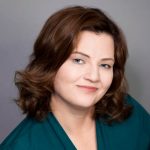 Experienced tech executive and cancer survivor who believes cancer patients deserve better options to navigate treatment. We are building products that will give cancer patients high quality, affordable options to cope with the common side effects of treatment.
Experienced tech executive and cancer survivor who believes cancer patients deserve better options to navigate treatment. We are building products that will give cancer patients high quality, affordable options to cope with the common side effects of treatment.
About Ryan Denney
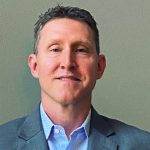 I’m a trained business coach that excels in sales, marketing, talent acquisition, and leadership who began my healthcare career at Stryker in 2004. Starting as a field rep on the Navigation product line, I was quickly promoted to a Global Product Manager, bridging the technology gap between surgeons, engineers, the field team, and overall corporate demands worldwide. Moving back out to the field I joined the Stryker Biologics division, leading a sales team and distributor network on disposables for half the US until 2014. With innovation being at the forefront, I took a leap into the entrepreneurial world, developed a product and company that was featured on Shark Tank to win a deal with Lori Greiner and Mark Cuban. Missing the healthcare dynamics, it was time to step back into Medtech with Veran Medical, where I led a top producing team, from capital to disposables, which became critical for the company’s acquisition (acquired by Olympus Corporation). I’m a risk taker and it’s never too late for the next challenge!
I’m a trained business coach that excels in sales, marketing, talent acquisition, and leadership who began my healthcare career at Stryker in 2004. Starting as a field rep on the Navigation product line, I was quickly promoted to a Global Product Manager, bridging the technology gap between surgeons, engineers, the field team, and overall corporate demands worldwide. Moving back out to the field I joined the Stryker Biologics division, leading a sales team and distributor network on disposables for half the US until 2014. With innovation being at the forefront, I took a leap into the entrepreneurial world, developed a product and company that was featured on Shark Tank to win a deal with Lori Greiner and Mark Cuban. Missing the healthcare dynamics, it was time to step back into Medtech with Veran Medical, where I led a top producing team, from capital to disposables, which became critical for the company’s acquisition (acquired by Olympus Corporation). I’m a risk taker and it’s never too late for the next challenge!
About Courtney Turich
I enjoy helping medical device and patient care organizations develop sustainable Go-to-Market strategies that align people and resources with their most critical growth opportunities. I help companies create effective ramp management programs that incent sales and marketing assets to integrate product and process development by assisting senior management teams in the ongoing refinement of their market development goals using accountable benchmarks, market research, and continuous adjustments to changing market dynamics.
Love the show? Subscribe, rate, review, and share!
Join the Medical Sales Podcast Community today:
